Excursions is a new main theme that began as Urban. I was looking for a catch-all keyword I could use for random images but as it turns out, almost all of the images fit under other main themes. I then decided I needed to tag all of the little adventures we had along the way including museums, beaches, bike rides, cemeteries, city visits, etc. To be clear, the keyword Urban has evolved into Excursions. We’ll have to see how I like it and how useful it is.
This image is an example of one picture needing at least three main theme tags; people, nature, and excursions.
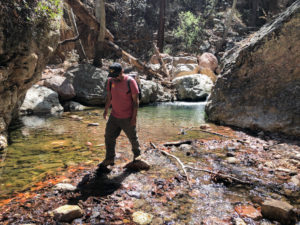 Portal was a busy two days and three nights. Our excursions included visiting the little town, following Michelle around on her daily house-sitting tour, a quick driving tour of the area including Rodeo, NM, and some campgrounds in the Chiricahua national monument, and a couple of short hikes, one to this watering hole and another to a beautiful vista in the monument.
Portal was a busy two days and three nights. Our excursions included visiting the little town, following Michelle around on her daily house-sitting tour, a quick driving tour of the area including Rodeo, NM, and some campgrounds in the Chiricahua national monument, and a couple of short hikes, one to this watering hole and another to a beautiful vista in the monument.
The Harlingen area was a remarkably busy four days and five nights given that we were only supposed to be there two nights and one day.
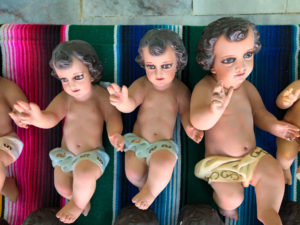 These little babies, maybe baby Jesus? were found in a store in Mexico. They were initially tagged as People, though that’s a stretch, and Art, another stretch. This is an example of an image not fitting in any of the initial main theme tags very well but they were seen on our excursion into Mexico.
These little babies, maybe baby Jesus? were found in a store in Mexico. They were initially tagged as People, though that’s a stretch, and Art, another stretch. This is an example of an image not fitting in any of the initial main theme tags very well but they were seen on our excursion into Mexico.
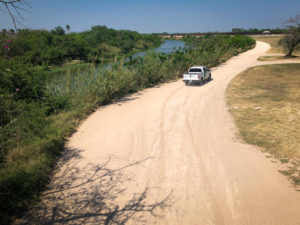 Heading into Mexico we crossed the famed Rio Grande River. Here is a border patrol truck driving the river frontage road. I have no idea how far this road goes or how many desperate people they encounter each day. The river is smaller than I had imagined.
Heading into Mexico we crossed the famed Rio Grande River. Here is a border patrol truck driving the river frontage road. I have no idea how far this road goes or how many desperate people they encounter each day. The river is smaller than I had imagined.
The tags for the above image are Transportation, Nature, Excursions.
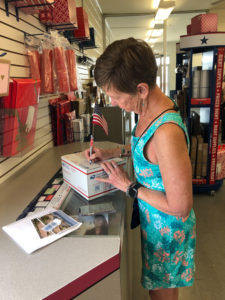 In the Harlingen area, we had several errands we ran. Here’s ellen at the post office mailing a package to her sister in Bellingham, WA. We also got the truck windows tinted, tried to get help fixing the outdoor shower leak, discovered some items we needed and did a Walmart run, went grocery shopping, saw a movie, hit a mall, and the like.
In the Harlingen area, we had several errands we ran. Here’s ellen at the post office mailing a package to her sister in Bellingham, WA. We also got the truck windows tinted, tried to get help fixing the outdoor shower leak, discovered some items we needed and did a Walmart run, went grocery shopping, saw a movie, hit a mall, and the like.
South Padre Island was a big day. Being only an hour away it was easy enough to get to but we actually spent a good chunk of time in Port Isabel, the town on this side of the bridge connecting the two.
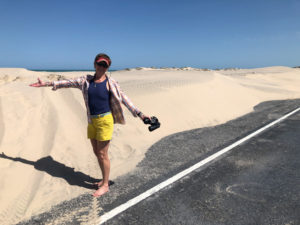 The sand dunes on SPI are tagged People, Nature, Excursions.
The sand dunes on SPI are tagged People, Nature, Excursions.
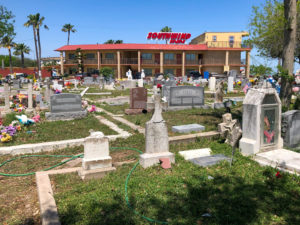
The cemetery in Port Isabel is very close to this hotel. We walked over from the lighthouse where we could see it from the top. This picture is a classic example of needing a catch-all tag like Excursions. I guess it could also fit under Buildings.
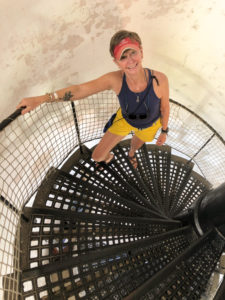 This image is tagged People, Buildings, Excursions as it is the stairway up to the top of the lighthouse.
This image is tagged People, Buildings, Excursions as it is the stairway up to the top of the lighthouse.
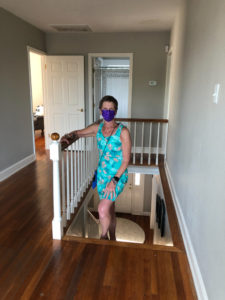 This is Ellen in her childhood home in Harlingen. Finding this home was the reason for our deep south Texas detour. It was such a wonderful experience. The owners were lovely and let us in to visit. Ellen told lots of stories of her adventures with her siblings in this house.
This is Ellen in her childhood home in Harlingen. Finding this home was the reason for our deep south Texas detour. It was such a wonderful experience. The owners were lovely and let us in to visit. Ellen told lots of stories of her adventures with her siblings in this house.
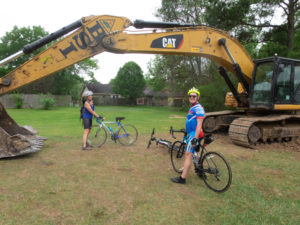
We had three full days in Houston with cousin David and that was a very busy time as well. We did two bike rides on bayou trails. One of the rides went past a bat colony. We could see any bats but found evidence of them in their scat on the ground. It didn’t smell very good.
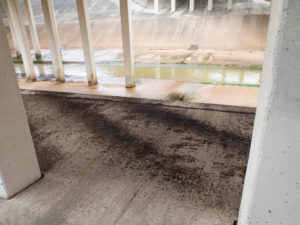
We also went to Houston Post, a renovated U.S. Postal facility that has the largest urban park on top of a building in the country. Inside are restaurants, shops, and entertainment venues. It’s still being developed but it is in Houston’s theater district downtown which is second in size only to Broadway in New York City.
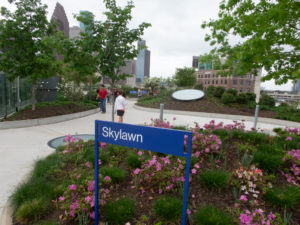
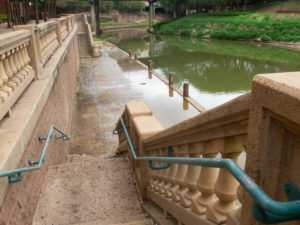 This is in downtown Houston where you can walk down to the bayou. It is said you can kayak in these waters although we did not see anyone in them.
This is in downtown Houston where you can walk down to the bayou. It is said you can kayak in these waters although we did not see anyone in them.
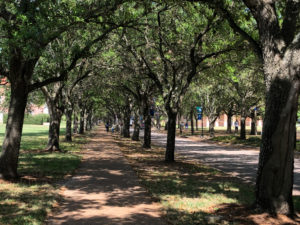
We spent an afternoon at Rice University. An hour and a half was spent at a lecture cousin Dave had signed up for. He’s my idol in the area of not letting your brain atrophy.
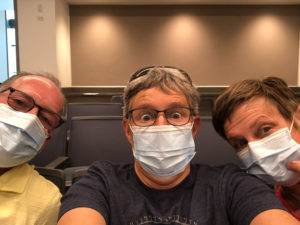
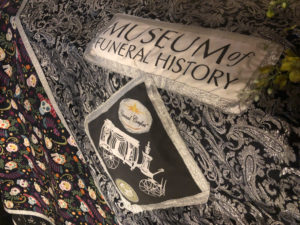
We also attended this fascinating museum. The museum is home to “the country’s largest collection of funeral service artifacts and features renowned exhibits on one of man’s oldest cultural customs,” according to its website. For its hallmark exhibit, Celebrating the Lives and Deaths of the Popes, the museum collaborated with the Vatican to highlight the ceremonies surrounding papal funerals. As of October 2020, the museum has a presidential exhibit, including Abraham Lincoln’s death mask.
Displays go back in time as far as Ancient Egyptian funerary practices and include items like hearses and unusual coffins. It also devotes space for a Presidential Funeral Gallery. Among other items, it has the original $99.25 funeral bill for George Washington.
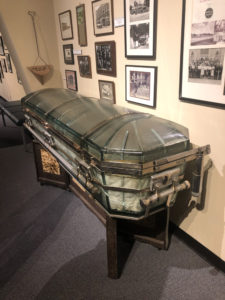
And the interactive exhibit on Frieda Kahlo.
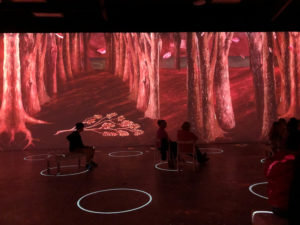
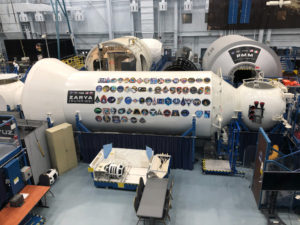
On the way to Galveston, we hit the Johnson Space Center. Named after Lyndon B. Johnson, the Johnson Space Center is NASA’s center where human spaceflight training, research, and flight control are conducted. It consists of a complex of 100 buildings constructed on 1,620 acres in the Clear Lake Area of Houston, which acquired the official nickname “Space City” in 1967. The center is home to NASA’s astronaut corps and is responsible for training astronauts from both the US and its international partners. It houses the Christopher C. Kraft Jr. Mission Control Center, which has provided the flight control function for every NASA human spaceflight since Gemini 4. It is popularly known by its radio call signs “Mission Control” and “Houston”.
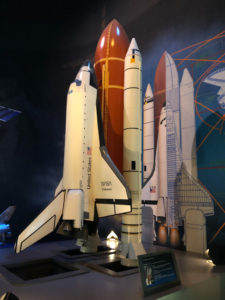
We had two excursions in Galveston, the town itself where we spent the day, and a walk to the beach from camp.
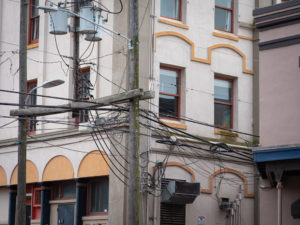 These electrical lines remind me of some I photographed in Kathmandu. During the 19th century, Galveston became a major U.S. commercial center and one of the largest ports in the United States. It was, for a time, Texas’ largest city, known as the “Queen City of the Gulf”. It was devastated by the unexpected Galveston Hurricane of 1900, whose effects included massive flooding and a storm surge that nearly wiped out the town. The natural disaster on the exposed barrier island is still ranked today as the deadliest in United States history, with an estimated death toll of between 6,000 to 12,000 people. The city subsequently reemerged during the Prohibition era of 1919–1933 as a leading tourist hub and a center of illegal gambling, nicknamed the Free State of Galveston until this era ended in the 1950s with subsequent other economic and social development.
These electrical lines remind me of some I photographed in Kathmandu. During the 19th century, Galveston became a major U.S. commercial center and one of the largest ports in the United States. It was, for a time, Texas’ largest city, known as the “Queen City of the Gulf”. It was devastated by the unexpected Galveston Hurricane of 1900, whose effects included massive flooding and a storm surge that nearly wiped out the town. The natural disaster on the exposed barrier island is still ranked today as the deadliest in United States history, with an estimated death toll of between 6,000 to 12,000 people. The city subsequently reemerged during the Prohibition era of 1919–1933 as a leading tourist hub and a center of illegal gambling, nicknamed the Free State of Galveston until this era ended in the 1950s with subsequent other economic and social development.
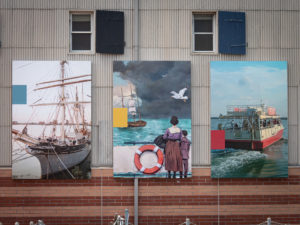
Our last morning was a foggy one.
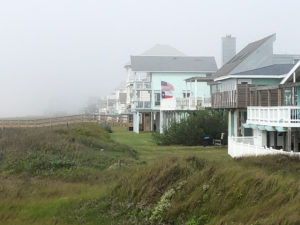
Then it was on to New Orleans. We really only had two excursions in three days, the plantation museum and NOLA itself. New Orleans was a gold mine for photography and within the city, we had what seemed like a million little excursions. We hit restaurants, museums, parades, shops, and we people watched to name a few.
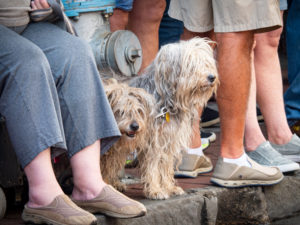 These two critters were taking in the festival parade. They could use a good brushing, don’t ya think?
These two critters were taking in the festival parade. They could use a good brushing, don’t ya think?
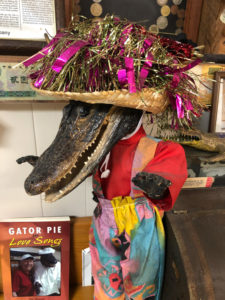 This critter was at our Cajun Restaurant where we ate after the morning at the plantation.
This critter was at our Cajun Restaurant where we ate after the morning at the plantation.
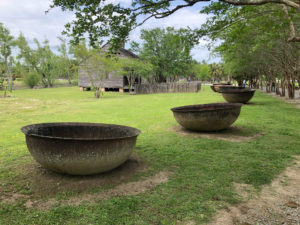 These big round containers had something to do with raising and processing sugar. The slave quarters are in the background.
These big round containers had something to do with raising and processing sugar. The slave quarters are in the background.
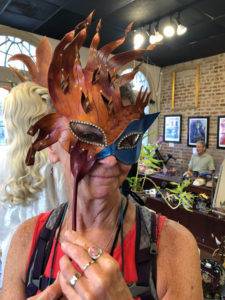
We went to a Mardi Gras mask store where the owner/artist makes leather masks. They were exquisite .
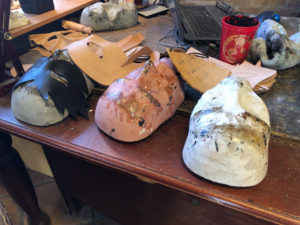
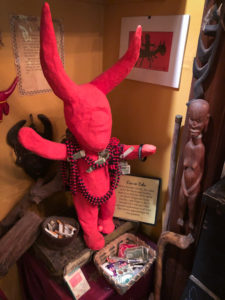 Again with the Voodoo Museum. There was so much fascinating information in there.
Again with the Voodoo Museum. There was so much fascinating information in there.
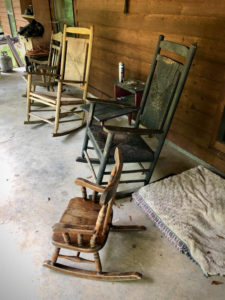
By chance Ellen’s sister Ruth was in Poplar, Mississippi visiting her son and grandchildren when we were passing through so we stopped in. This is her son’s place and Ruth’s bedroom when she visits.
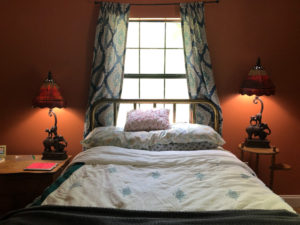
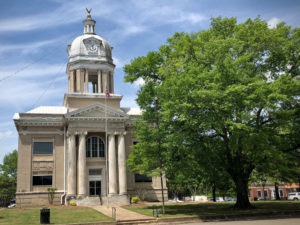
Our visit to Houston, MS was brief. We had planned two nights at Davis Lake Campground and one whole day in this small town of 5,000. The city hall is beautiful and I have no doubt this lunch counter saw some action during the civil rights movement of the 1960s.
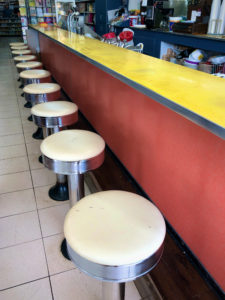
Another Houston excursion included finding Ellen’s grandfather’s grave. We found it largely on Ellen’s memory of where she used to visit when she lived there. It overlooked the high school, which mysteriously burned down in 1973 after electing its first Black homecoming queen.
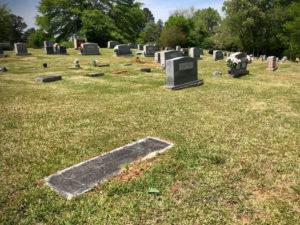
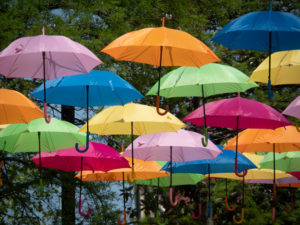
We allowed ourselves one day to visit Dollywood. These two images are from there. We also rode the steam train which was pretty cool. But we weren’t loving the theme park so we headed to Gatlinburg in the afternoon.
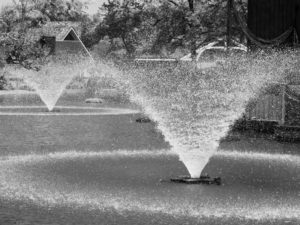
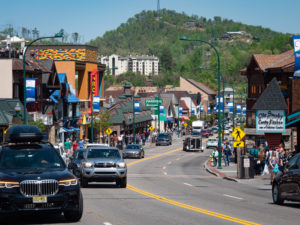
The town of Gatlinburg wasn’t our jam either. It was kind of a cross between The Strip in Las Vegas and Main Street at Disneyland. Buy, buy, buy, and fake, overdone building facades. We DID have some delicious fudge though and a good meal at a restaurant with a Hopi Radio sticker on its window.
What saved the day was the sky bridge experience. We took a ski lift to the top of a hill and walked on suspension bridges between other hilltops and had pretty great views. It turns out Smokey Mountain National Park is the most visited national park with 11 million visitors a year.
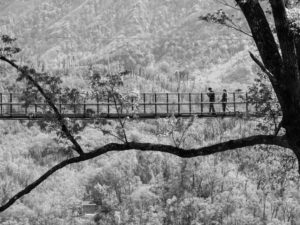
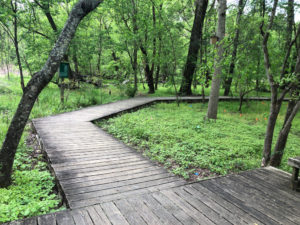
From Tennessee, we headed to Weaverville, NC, just outside of Ashville to visit some old neighbors who had moved there a few years ago. It was a delightful time, we had lunch at the country club, drove around Ashville and got the tour, and stopped at this park for a wander. It was beautiful with turtles and lots of birds.
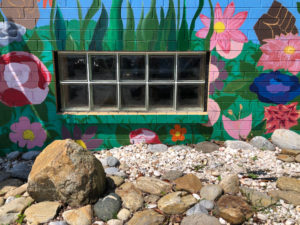
In Hillsborough, NC we stayed three days to visit my beautiful cousin Wendy and her two lovely children. We had many outings with them including lots of thrifting. Wendy could rival Chelsea, our daughter, in the thrifting department.
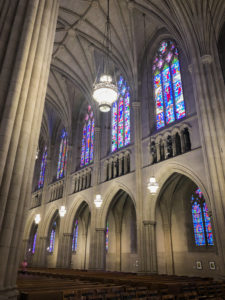
We also hit up UNC Chapel Hill, Duke University and their gardens, chapel, and downtown Hillsborough, and just hung around her property which is full of chickens, mules, ducks, geese, and at least one snake.
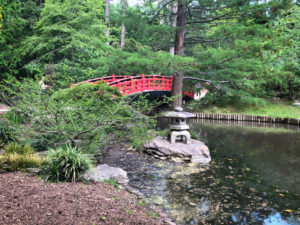
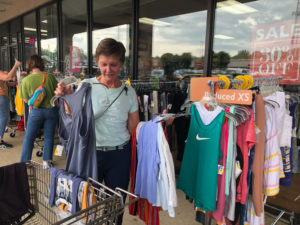 Five states later we are in Cincinnati for a week! Following a day in the ER with Akacia she rallied and we thrifted.
Five states later we are in Cincinnati for a week! Following a day in the ER with Akacia she rallied and we thrifted.
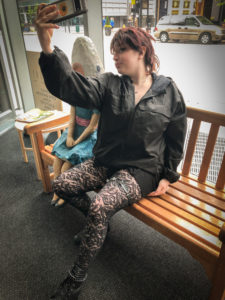 We tried to go to the shark girl museum but had lunch instead.
We tried to go to the shark girl museum but had lunch instead.
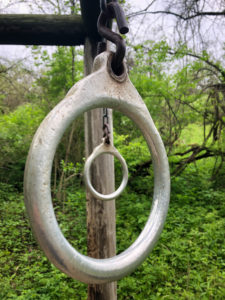
Ellen and I hiked Embshoff Woods.
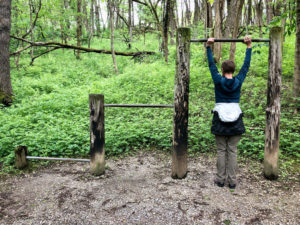
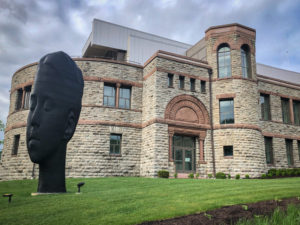 We also walked around Eden Park and saw great views of the city.
We also walked around Eden Park and saw great views of the city.
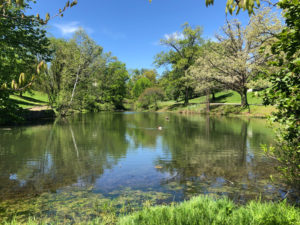 We found this beautiful pond at Spring Grove Cemetery. Spring Grove Cemetery and Arboretum is a nonprofit rural cemetery and arboretum in Cincinnati, Ohio. It is the third largest cemetery in the United States and is recognized as a US National Historic Landmark.
We found this beautiful pond at Spring Grove Cemetery. Spring Grove Cemetery and Arboretum is a nonprofit rural cemetery and arboretum in Cincinnati, Ohio. It is the third largest cemetery in the United States and is recognized as a US National Historic Landmark.
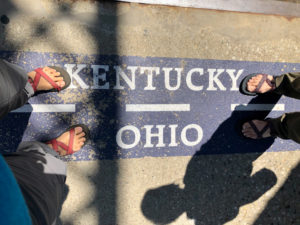
On the Purple People Bridge, one can stand in two states at once. Not quite as impressive as the Four Corners of Utah, Colorado, Arizona, and New Mexico but fun nonetheless. It connects Cincinnati and Newport, Kentucky. And locks are always fun to shoot.
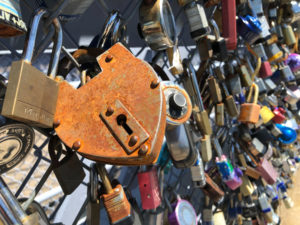
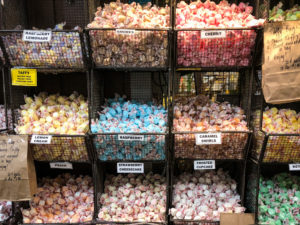
After Cincinnati, we stopped in Iowa for two nights. from there we hit the Amana Colonies for a morning of walking and photographing. the stores were fun. There was an entire store devoted to just Christmas ornaments and decorations. Baskets of taffy are always fun.
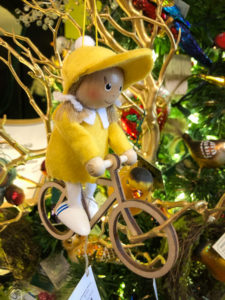
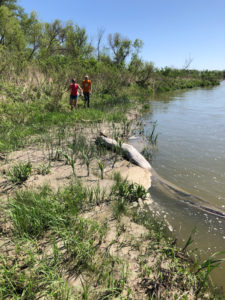
Once we made it to Nebraska after our harrowing experience in near tornado weather we got up the next morning and my brother Jonathan took us to the Platt River. He felt a need to wade across and check out the other bank. It is a shallow slow-moving river that occasionally floods. He showed us signs of severe erosion where parcels of farmland are being swallowed up by the river.
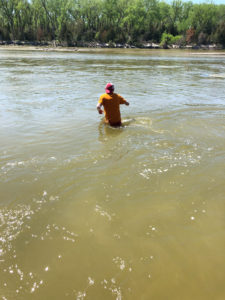
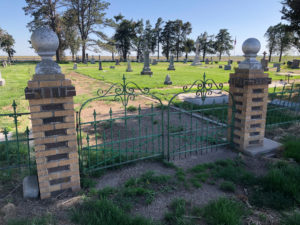 That afternoon went to a local cemetery where my birthfather is buried as well as several members of Jonathan’s family. They have been on this farm for over 100 years. The next day we donned beekeeping suits and helped with some bee boxes. Later that day we helped extract honey and bottle it. SO cool!
That afternoon went to a local cemetery where my birthfather is buried as well as several members of Jonathan’s family. They have been on this farm for over 100 years. The next day we donned beekeeping suits and helped with some bee boxes. Later that day we helped extract honey and bottle it. SO cool!
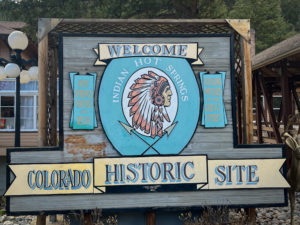
On to Denver and our excursions there. Chelsea took us to Idaho Springs on I-70 outside of Denver for a day of hot rubbing in some natural hot springs. It was a delightful day. We finished with some Colorado Style Pizza and a quick look in an outdoor clothing thrift shop.
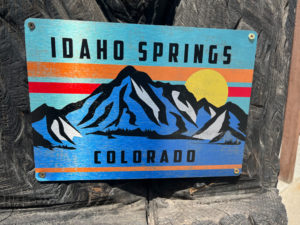
In Denver, we stayed with my brother Jonathan and his wife and two kids and visited our good friends the Prows (who had this sign hanging in their home). Of course, both of these images could be tagged under Art or Signs, or both!
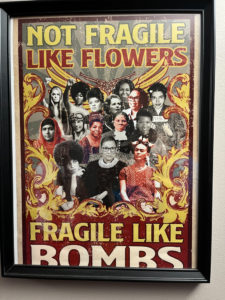
We ran errands at the mall, walked the Santa Fe Arts District, walked the kids to school, and generally hung out with family. We bugged out a couple of days ahead of schedule to miss the snowstorm heading our way with over a foot of snow predicted.
I feel like we were twice as busy as this blog shows but it was a nice mixture of busy and chilling at campgrounds and with family.
Thanks for letting me revisit our amazing adventure. I hope you’re enjoying reading it as much as I am writing it! Until next time,
Happy shooting!
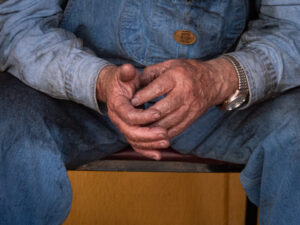 Last September I had the great pleasure of being a photo guide with Arizona Highways Photo Scapes in Chama, New Mexico. They have a small gauge steam engine that runs out of there, similar to the famous Silverton, CO train. These hands belong to a train worker I spotted at our lunch stop. He was sitting and chatting with fellow workers, on break before taking us back to Chama.
Last September I had the great pleasure of being a photo guide with Arizona Highways Photo Scapes in Chama, New Mexico. They have a small gauge steam engine that runs out of there, similar to the famous Silverton, CO train. These hands belong to a train worker I spotted at our lunch stop. He was sitting and chatting with fellow workers, on break before taking us back to Chama.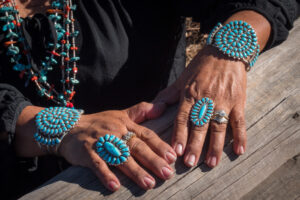 I was doing a family portrait session in Flagstaff one day. Mom/Grandma arrived adorned with this beautiful jewelry. Before we got started I asked her to pose for a quick shot.
I was doing a family portrait session in Flagstaff one day. Mom/Grandma arrived adorned with this beautiful jewelry. Before we got started I asked her to pose for a quick shot.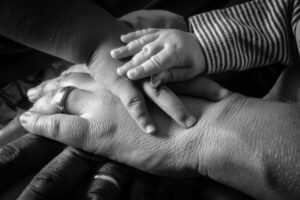 I was visiting my sister and her family in Florida a few years ago shortly after her youngest was born. We did a family shoot and came up with this idea.
I was visiting my sister and her family in Florida a few years ago shortly after her youngest was born. We did a family shoot and came up with this idea.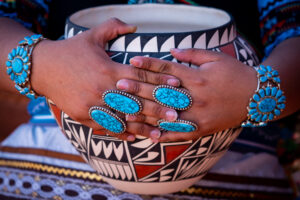 One of my favorite high school senior photo sessions produced this beautiful image.
One of my favorite high school senior photo sessions produced this beautiful image.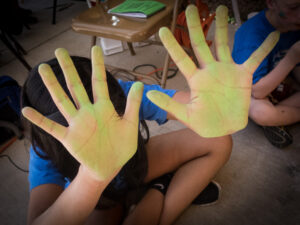 Kids stayed entertained with chalk at a chess tournament when I was coaching and photographing the game at Killip years ago. I walked by and this child didn’t want their picture taken so I photographed the raised hands instead. Thanks, kid! lol
Kids stayed entertained with chalk at a chess tournament when I was coaching and photographing the game at Killip years ago. I walked by and this child didn’t want their picture taken so I photographed the raised hands instead. Thanks, kid! lol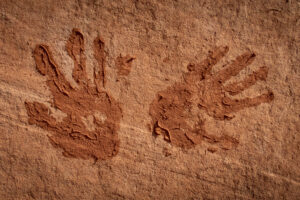 Walking up Antelope Canyon from Lake Powell we came across someone’s muddy hand prints on the sandstone.
Walking up Antelope Canyon from Lake Powell we came across someone’s muddy hand prints on the sandstone.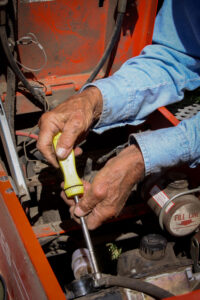 It’s a long story but these are the hands of my brother’s grandfather working on his tractor on his farm in Nebraska.
It’s a long story but these are the hands of my brother’s grandfather working on his tractor on his farm in Nebraska. In 2018 my wife and I flew to Nepal to hike to Everest Base Camp. These hands belong to a local we came across along the way.
In 2018 my wife and I flew to Nepal to hike to Everest Base Camp. These hands belong to a local we came across along the way.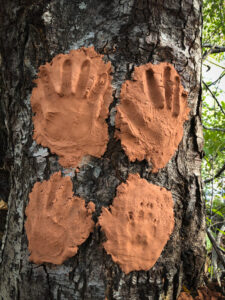 More mud art I found on a tree in Sedona!
More mud art I found on a tree in Sedona!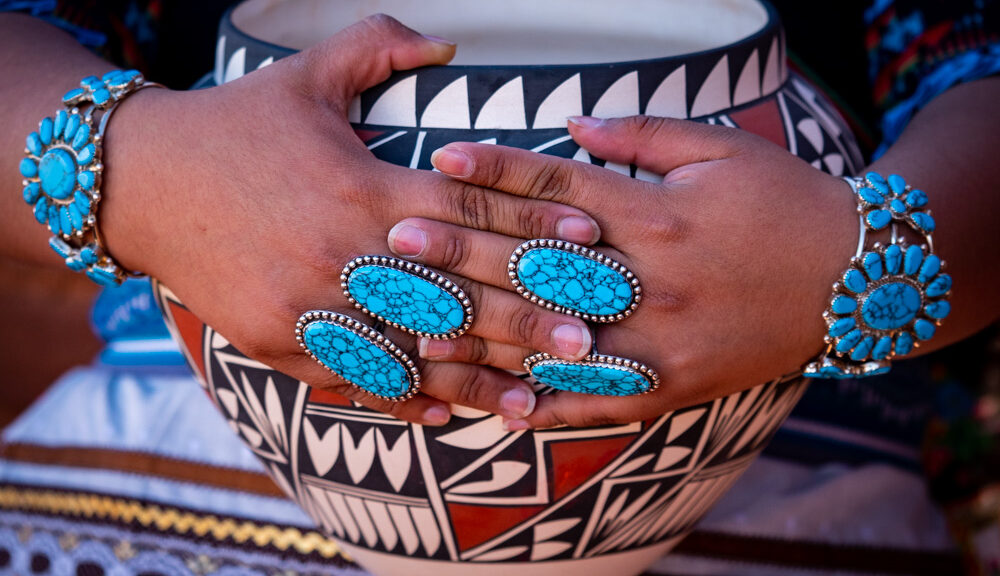
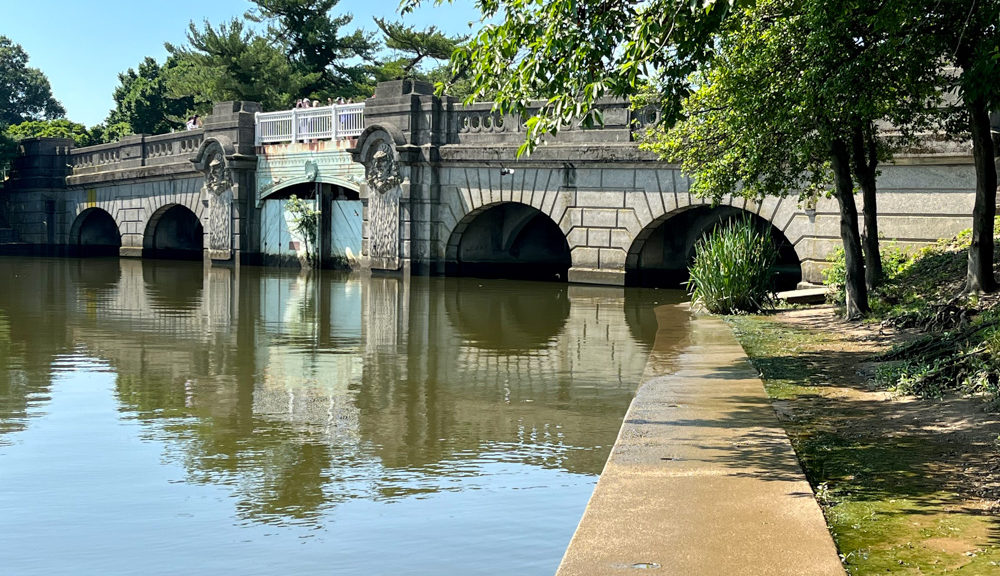
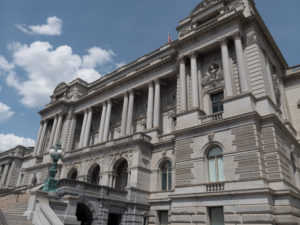 The Library of Congress was NOT what I pictured it to be. From what we saw it was much more a museum than a library. Apparently, it is the official research library that serves the United States Congress and is the de facto national library of the United States. It is the oldest federal cultural institution in the country and is one of the largest libraries in the world. Its collections are universal, not limited by subject, format, or national boundary, and include research materials from all parts of the world and in more than 470 languages. Who knew?
The Library of Congress was NOT what I pictured it to be. From what we saw it was much more a museum than a library. Apparently, it is the official research library that serves the United States Congress and is the de facto national library of the United States. It is the oldest federal cultural institution in the country and is one of the largest libraries in the world. Its collections are universal, not limited by subject, format, or national boundary, and include research materials from all parts of the world and in more than 470 languages. Who knew?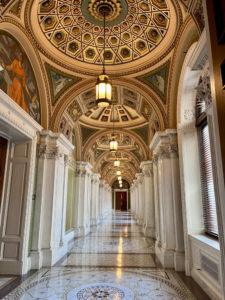
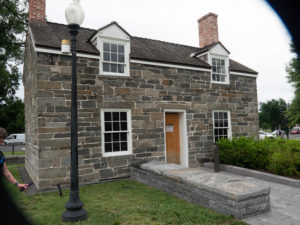 We stumbled across this building on our way to a March for our Lives rally. Excluding the White House, the Lockkeeper’s House is the oldest building on the National Mall, built in 1837.
We stumbled across this building on our way to a March for our Lives rally. Excluding the White House, the Lockkeeper’s House is the oldest building on the National Mall, built in 1837.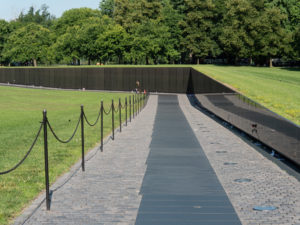 The Vietnam Memorial was powerful. The names on the Wall, originally numbering 57,939 when it was dedicated in 1982, are listed in the chronological order of the casualty dates. It’s interesting how short the wall is from the early days of the war and startling how tall it gets in the middle. Additional names have since been added and as of May 2018, there were 58,320 names. The number of names on the wall is different from the official number of U.S. Vietnam War deaths, which is 58,220 as of May 2018.
The Vietnam Memorial was powerful. The names on the Wall, originally numbering 57,939 when it was dedicated in 1982, are listed in the chronological order of the casualty dates. It’s interesting how short the wall is from the early days of the war and startling how tall it gets in the middle. Additional names have since been added and as of May 2018, there were 58,320 names. The number of names on the wall is different from the official number of U.S. Vietnam War deaths, which is 58,220 as of May 2018.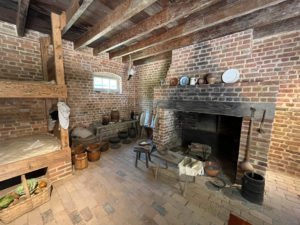
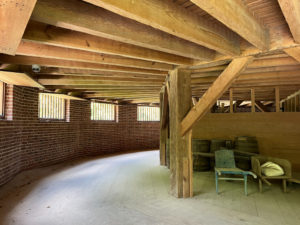
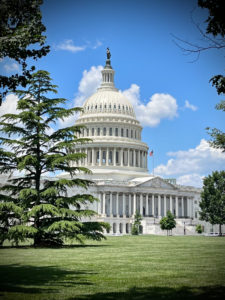 The Capital is located on Capitol Hill at the eastern end of the National Mall. Though no longer at the geographic center of the federal district, the Capitol forms the origin point for the district’s street-numbering system and the district’s four quadrants.
The Capital is located on Capitol Hill at the eastern end of the National Mall. Though no longer at the geographic center of the federal district, the Capitol forms the origin point for the district’s street-numbering system and the district’s four quadrants.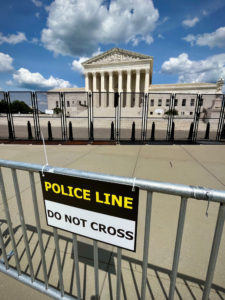 The Supreme Court Building also referred to as “The Marble Palace,” serves as the official workplace of the Chief Justice of the United States and the eight Associate Justices of the Supreme Court. It is located in the block immediately east of the United States Capitol and north of the Library of Congress. On May 4, 1987, the Supreme Court Building was designated a National Historic Landmark.
The Supreme Court Building also referred to as “The Marble Palace,” serves as the official workplace of the Chief Justice of the United States and the eight Associate Justices of the Supreme Court. It is located in the block immediately east of the United States Capitol and north of the Library of Congress. On May 4, 1987, the Supreme Court Building was designated a National Historic Landmark.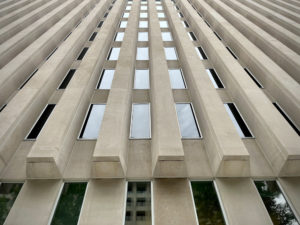 I don’t remember what this building is but we got out of the car, I looked up and saw this…so I SHOT it.
I don’t remember what this building is but we got out of the car, I looked up and saw this…so I SHOT it.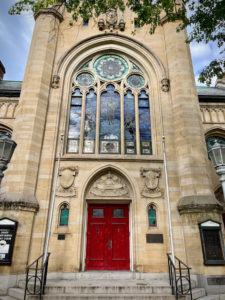
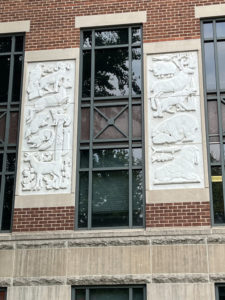
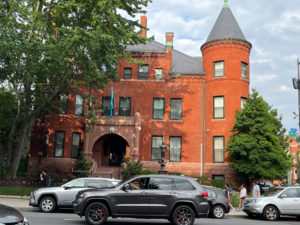 Walking from one place to another, outside of the National Mall, we would come across random buildings like the Embassy of Kazakstan.
Walking from one place to another, outside of the National Mall, we would come across random buildings like the Embassy of Kazakstan.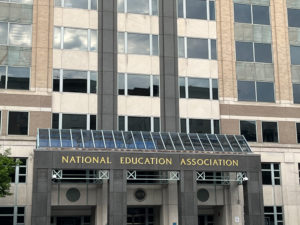 The National Education Association.
The National Education Association.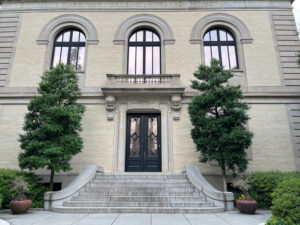 The National Geographic Society.
The National Geographic Society.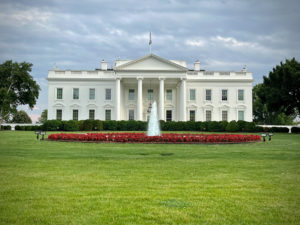 An iPhone picture of the White House. Some days you could get right up to the gate and some days not. Today was a good day.
An iPhone picture of the White House. Some days you could get right up to the gate and some days not. Today was a good day.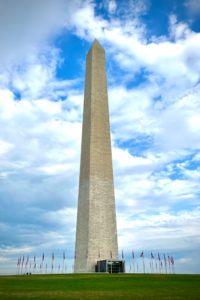 The Washington Monument’s construction began in 1848 and was halted for a period of 23 years, from 1854 to 1877 due to a lack of funds, a struggle for control over the Washington National Monument Society, and the American Civil War. It was built to commemorate George Washington, once commander-in-chief of the Continental Army (1775–1784) in the American Revolutionary War and the first President of the United States (1789–1797). Located almost due east of the Reflecting Pool and the Lincoln Memorial, the monument, made of marble, granite, and bluestone gneiss, is both the world’s tallest predominantly stone structure and the world’s tallest obelisk at 555 feet
The Washington Monument’s construction began in 1848 and was halted for a period of 23 years, from 1854 to 1877 due to a lack of funds, a struggle for control over the Washington National Monument Society, and the American Civil War. It was built to commemorate George Washington, once commander-in-chief of the Continental Army (1775–1784) in the American Revolutionary War and the first President of the United States (1789–1797). Located almost due east of the Reflecting Pool and the Lincoln Memorial, the monument, made of marble, granite, and bluestone gneiss, is both the world’s tallest predominantly stone structure and the world’s tallest obelisk at 555 feet 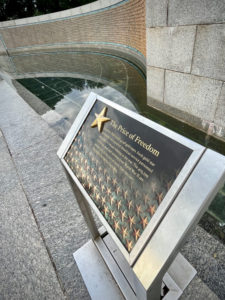 The World War II Memorial was stunning. But this plaque was possibly the most important part of the memorial. It is the Freedom Wall. It explains the price of freedom in very real terms. The wall holds 4,048 gold stars you can see behind the sign to the left. Each star represents one hundred American service personnel who died or remain missing in the war. The 405,399 Americans dead and missing from World War II are second only to the loss of more than 620,000 Americans during our Civil War. And THAT only includes our country. And only service members. Let that sink in for a minute.
The World War II Memorial was stunning. But this plaque was possibly the most important part of the memorial. It is the Freedom Wall. It explains the price of freedom in very real terms. The wall holds 4,048 gold stars you can see behind the sign to the left. Each star represents one hundred American service personnel who died or remain missing in the war. The 405,399 Americans dead and missing from World War II are second only to the loss of more than 620,000 Americans during our Civil War. And THAT only includes our country. And only service members. Let that sink in for a minute.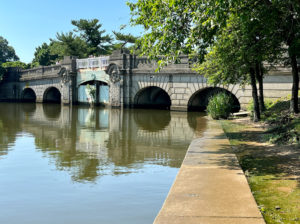
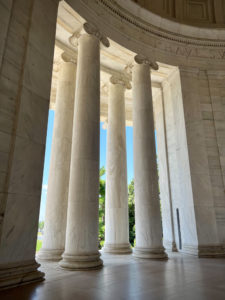
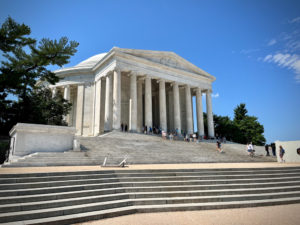
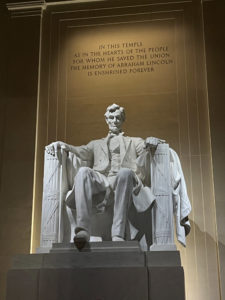
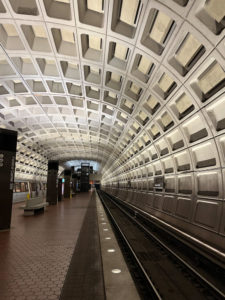 Even the Metro station is kinda cool inside.
Even the Metro station is kinda cool inside.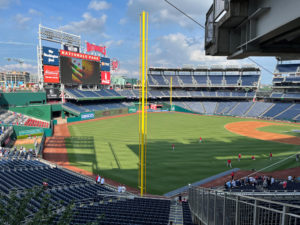 We went to a Washington Nationals Major League Baseball game with our friends. I even ate a hot dog.
We went to a Washington Nationals Major League Baseball game with our friends. I even ate a hot dog.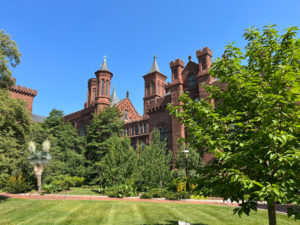 The Smithsonian Institution is legendary. I learned this at an exhibit: “The Smithsonian Institution started with a gift from an 18th-century English scientist named James Smithson who left his fortune to the United States, a country he had never seen. This exhibition looks at the history of the Smithsonian, focusing on its research, museums, and public programs in art, culture, history, and science and the role of the American public in the Smithsonian museums and research.
The Smithsonian Institution is legendary. I learned this at an exhibit: “The Smithsonian Institution started with a gift from an 18th-century English scientist named James Smithson who left his fortune to the United States, a country he had never seen. This exhibition looks at the history of the Smithsonian, focusing on its research, museums, and public programs in art, culture, history, and science and the role of the American public in the Smithsonian museums and research.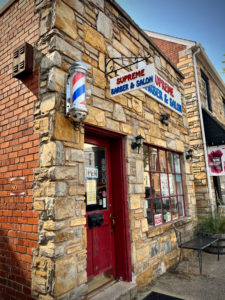
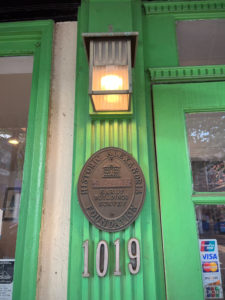
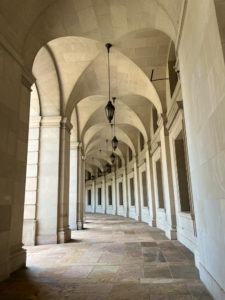 I’m not sure what this building is but we emerged from the underground Metro to this. Stunning.
I’m not sure what this building is but we emerged from the underground Metro to this. Stunning.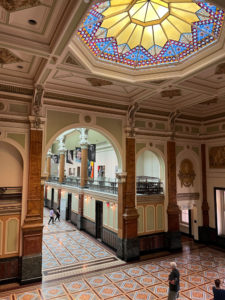 This is the National Portrait Gallery which is full of, you guessed it, portraits! Among other art pieces.
This is the National Portrait Gallery which is full of, you guessed it, portraits! Among other art pieces.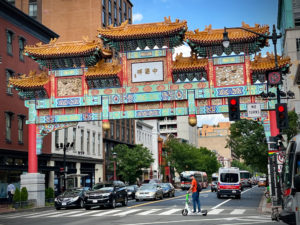 We didn’t go into Chinatown but found one of the entrances to it near the portrait gallery. Again, next time.
We didn’t go into Chinatown but found one of the entrances to it near the portrait gallery. Again, next time.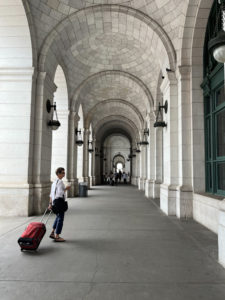 Here’s Ellen at Union Station, on our way to find the Amtrak train that will take us to New York City.
Here’s Ellen at Union Station, on our way to find the Amtrak train that will take us to New York City.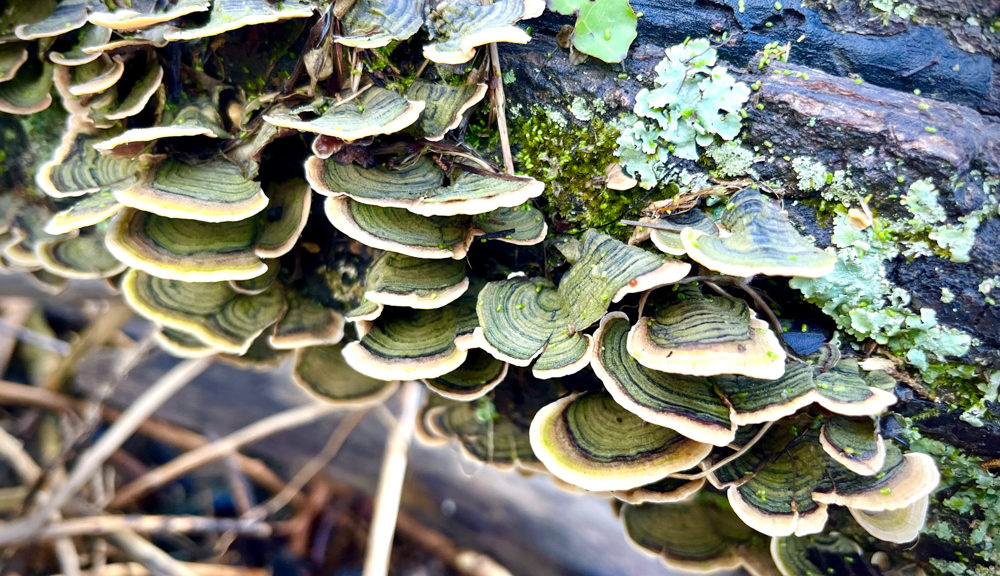
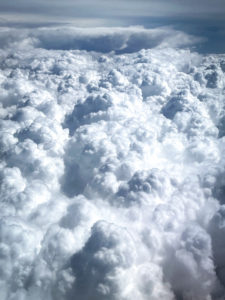 Let us begin with our airplane journey across the U.S. It was clear skies until we flew into Dallas, Texas where we encountered severe thunderstorms. In fact, we found out we were one of the last planes to fly out of DFW that afternoon due to the storms. Whew! Once we got above the clouds though, it was beautiful.
Let us begin with our airplane journey across the U.S. It was clear skies until we flew into Dallas, Texas where we encountered severe thunderstorms. In fact, we found out we were one of the last planes to fly out of DFW that afternoon due to the storms. Whew! Once we got above the clouds though, it was beautiful.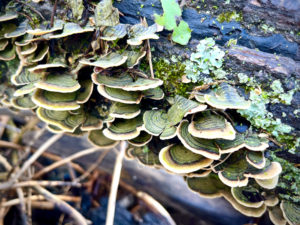
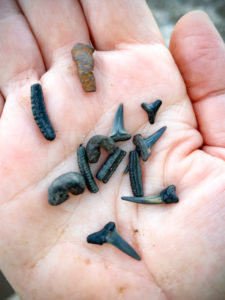 It was amazing how many we found. It makes one wonder how many are out there because this is a popular activity in the area and most folks find plenty.
It was amazing how many we found. It makes one wonder how many are out there because this is a popular activity in the area and most folks find plenty.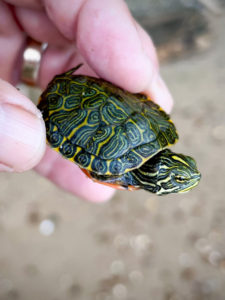 While looking for shark teeth down the beach I found this little guy. Definitely a highlight.
While looking for shark teeth down the beach I found this little guy. Definitely a highlight.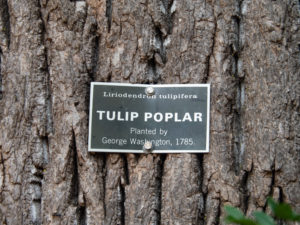 Following the morning at the river and a parking lot, and a tailgate picnic our friends dropped us off at Mt. Vernon, home of George Washington. There will be plenty of pictures later in the Buildings blog but I just wanted to point out how cool it was to touch a tree planted by our first president.
Following the morning at the river and a parking lot, and a tailgate picnic our friends dropped us off at Mt. Vernon, home of George Washington. There will be plenty of pictures later in the Buildings blog but I just wanted to point out how cool it was to touch a tree planted by our first president.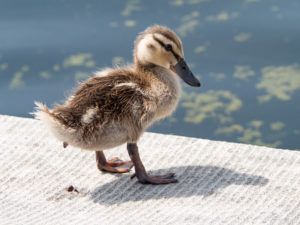
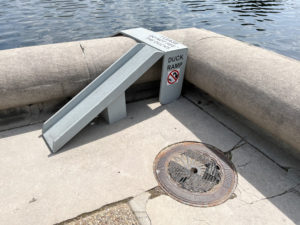
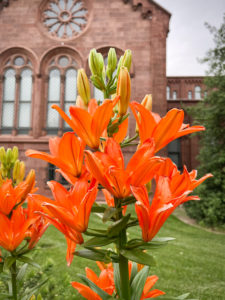
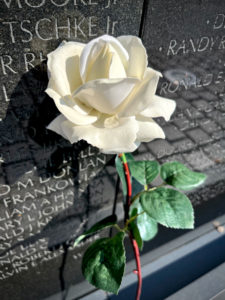
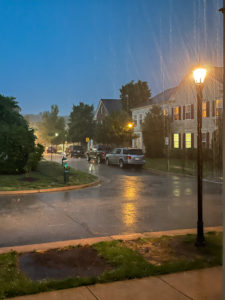
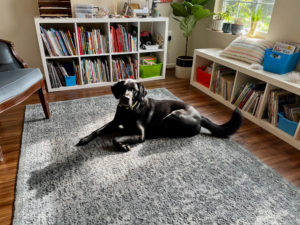
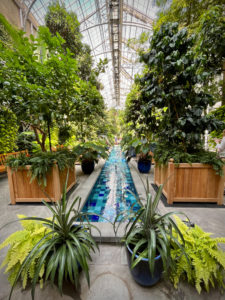
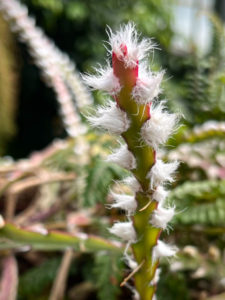
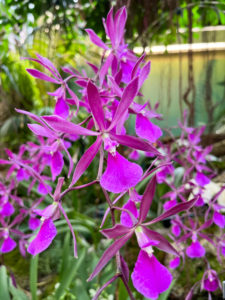
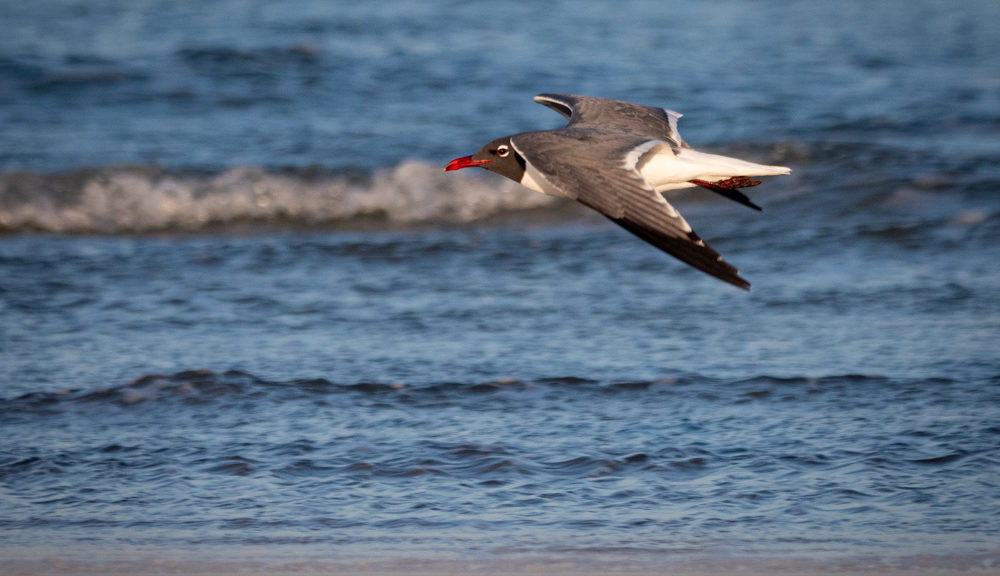
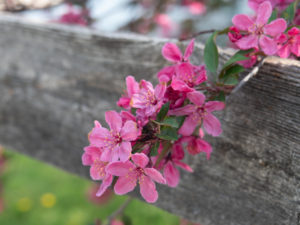
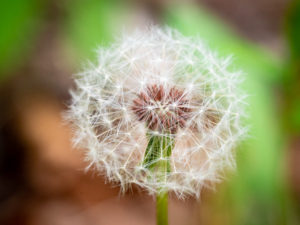 On this dandelion, I might add the words design, seeds, and stem.
On this dandelion, I might add the words design, seeds, and stem.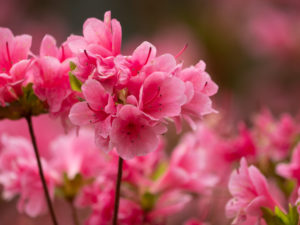
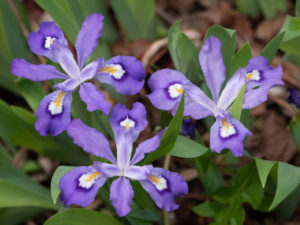
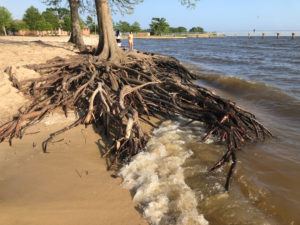
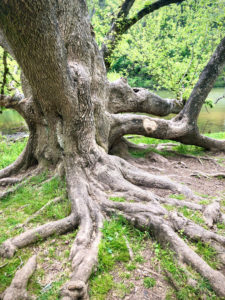
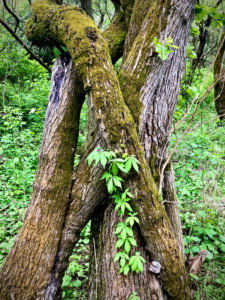
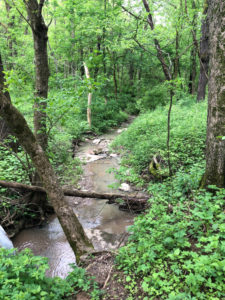
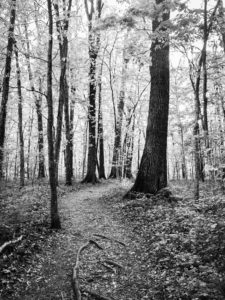
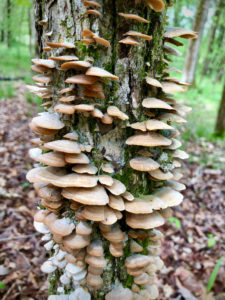 Fungi!!
Fungi!!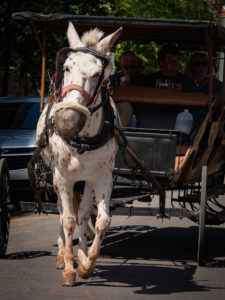 This horse was working the streets of New Orleans.
This horse was working the streets of New Orleans.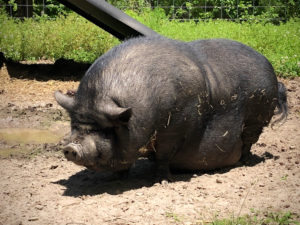 When we stopped to see Ellen’s sister in Mississippi, this guy was in a pen on the property.
When we stopped to see Ellen’s sister in Mississippi, this guy was in a pen on the property.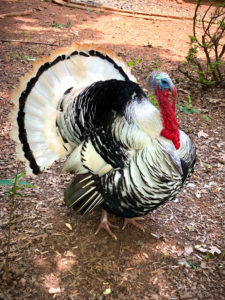
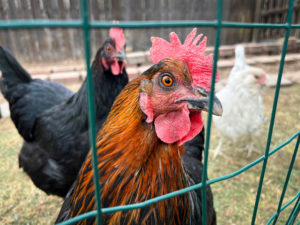
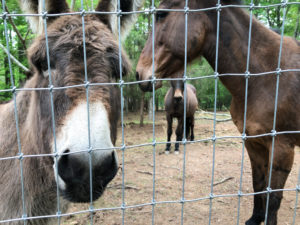 My cousin owns four mules and this donkey on six acres outside of Chapel Hill.
My cousin owns four mules and this donkey on six acres outside of Chapel Hill.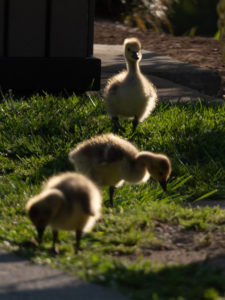 These little cuties were escorted across the street, IN the crosswalk mind you, by their Canada Geese parents in Gatlinburg, TN.
These little cuties were escorted across the street, IN the crosswalk mind you, by their Canada Geese parents in Gatlinburg, TN.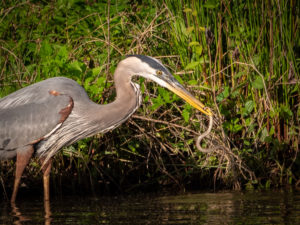 I got to watch this handsome fellow eat some Blue Heron spaghetti at our camp in Mississippi.
I got to watch this handsome fellow eat some Blue Heron spaghetti at our camp in Mississippi.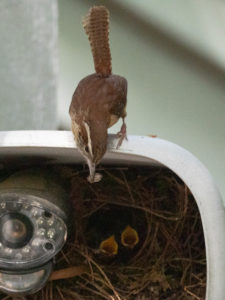 This Carolina Wren was feeding her babies nestled in a home camera cover at our friend’s house in Weaverville, NC.
This Carolina Wren was feeding her babies nestled in a home camera cover at our friend’s house in Weaverville, NC.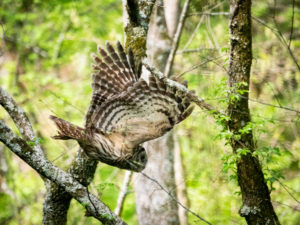 I happened to have my long lens with me on a short hike at our camp in Tennessee when this beauty took off from a tree.
I happened to have my long lens with me on a short hike at our camp in Tennessee when this beauty took off from a tree.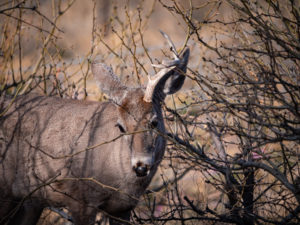
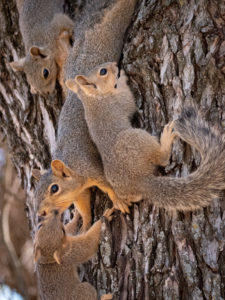
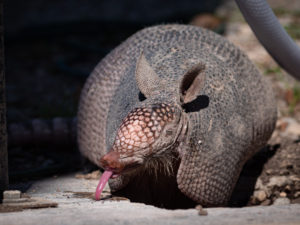
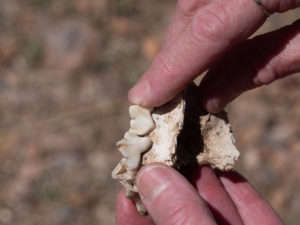 Not sure whose teeth these are but it’s tagged under animals.
Not sure whose teeth these are but it’s tagged under animals.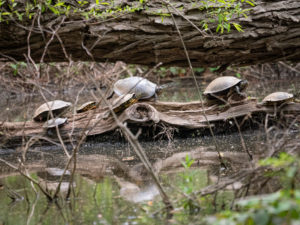 We saw a few turtles along the way which is always a treat. These guys were on a log in a swampy area of a park we walked in near Asheville, NC.
We saw a few turtles along the way which is always a treat. These guys were on a log in a swampy area of a park we walked in near Asheville, NC.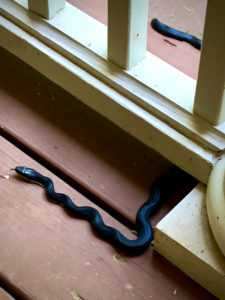 We found this fellow on my cousin’s porch in Hillsborough, NC.
We found this fellow on my cousin’s porch in Hillsborough, NC.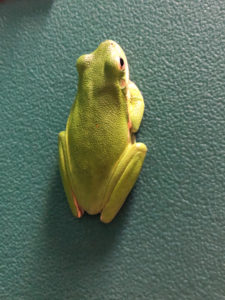 My little green friend kept me company while I used the restroom at our camp in Louisiana.
My little green friend kept me company while I used the restroom at our camp in Louisiana.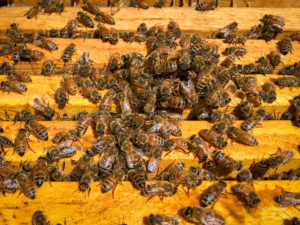 Some of the bees from our beekeeping experience in St. Paul, NE.
Some of the bees from our beekeeping experience in St. Paul, NE.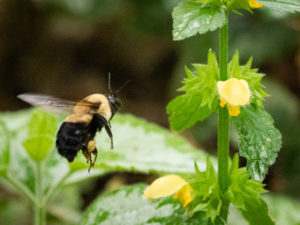 Catching flying insects requires a bit of patience and a lot of pixels to delete later.
Catching flying insects requires a bit of patience and a lot of pixels to delete later.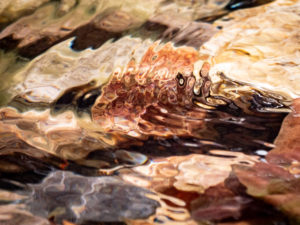 Water is another of my favorite places to hang out. I’m usually playing in, on, or around it and love finding patterns in its movement. This image fits under Nature>Water>clear, stream, pattern.
Water is another of my favorite places to hang out. I’m usually playing in, on, or around it and love finding patterns in its movement. This image fits under Nature>Water>clear, stream, pattern.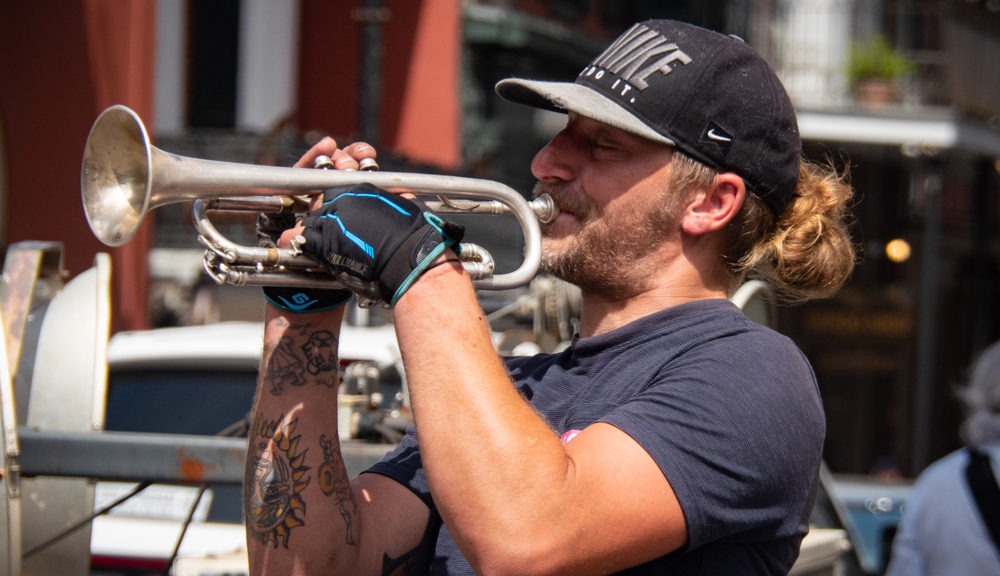
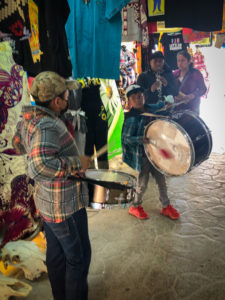
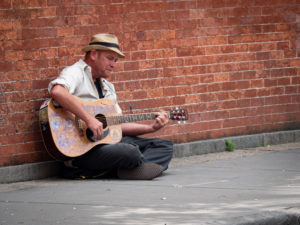
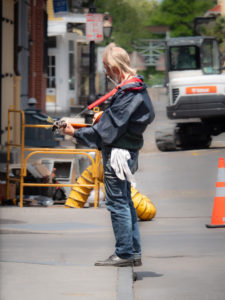
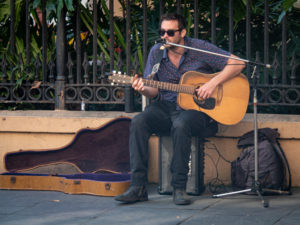
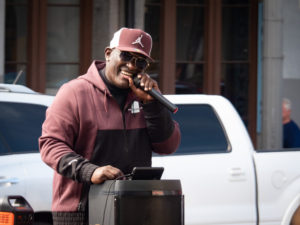 This guy had his karaoke music playing and was singing his heart out for a buck.
This guy had his karaoke music playing and was singing his heart out for a buck.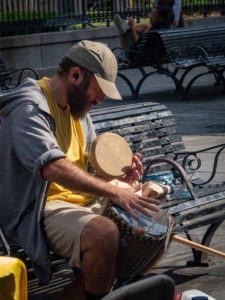 And some were just playing for themselves.
And some were just playing for themselves.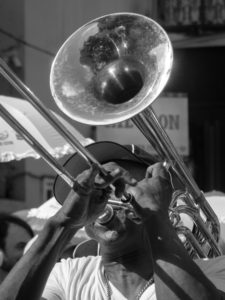
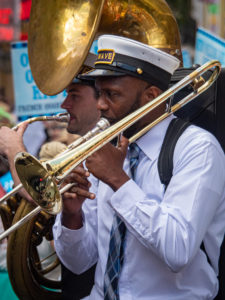
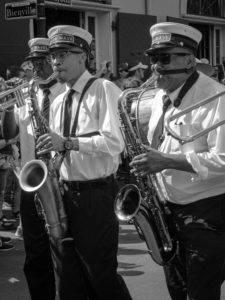
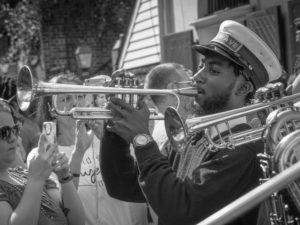
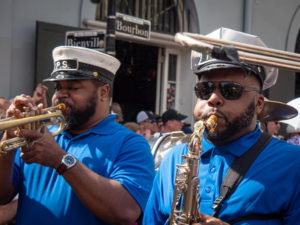
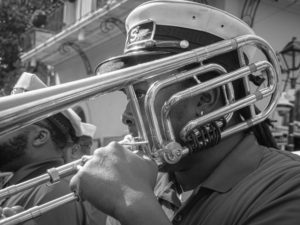
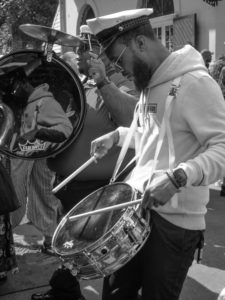
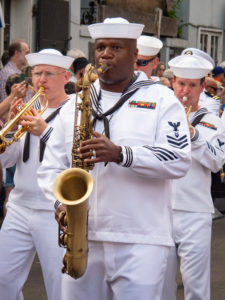
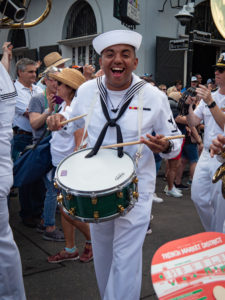
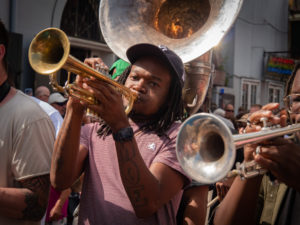
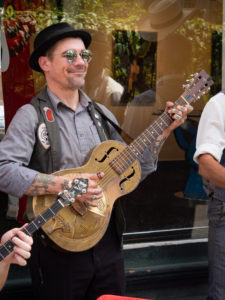
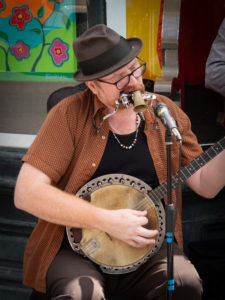
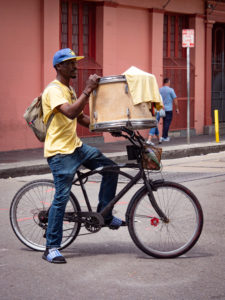 Raw talent if you ask me, riding a bike with this big drum.
Raw talent if you ask me, riding a bike with this big drum.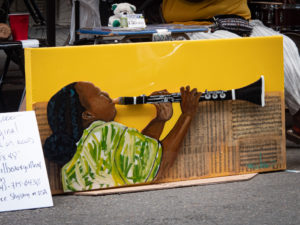
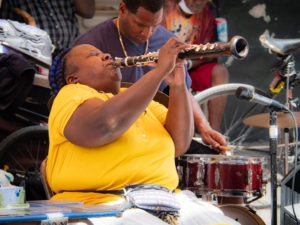
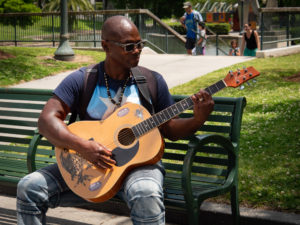 We ran into Mai-Mai (My-My?) near some statues in Armstrong Park. He was just hanging out on the park bench, chatting with people and playing his guitar. We listened and talked with him for a while. Such a sweet man.
We ran into Mai-Mai (My-My?) near some statues in Armstrong Park. He was just hanging out on the park bench, chatting with people and playing his guitar. We listened and talked with him for a while. Such a sweet man.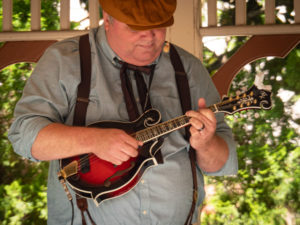 Dollywood had some great Bluegrass bands playing as well. The South definitely did not disappoint in the music department.
Dollywood had some great Bluegrass bands playing as well. The South definitely did not disappoint in the music department.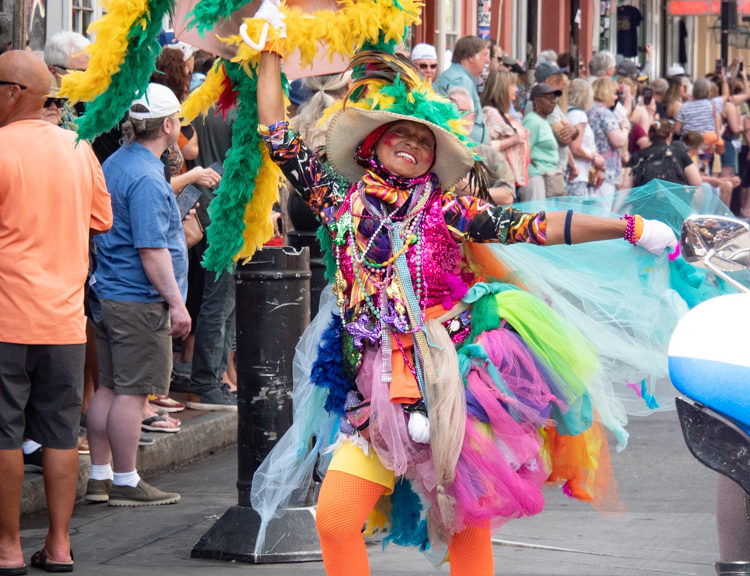
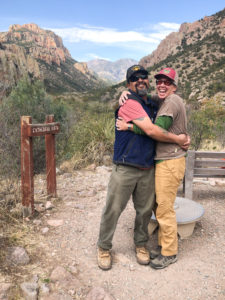 I have known Eddie and Michelle for a LONG time. I met Michelle when she came to work at Killip Elementary School in Flagstaff in maybe 2000? Two years later I got a cancelation for a Grand Canyon River Trip and they joined us. Later that fall, in October 2002, Ellen and I got married and we fashioned our wedding after theirs from the previous year. So, our anniversary is one year and one week later than this sweet couple.
I have known Eddie and Michelle for a LONG time. I met Michelle when she came to work at Killip Elementary School in Flagstaff in maybe 2000? Two years later I got a cancelation for a Grand Canyon River Trip and they joined us. Later that fall, in October 2002, Ellen and I got married and we fashioned our wedding after theirs from the previous year. So, our anniversary is one year and one week later than this sweet couple.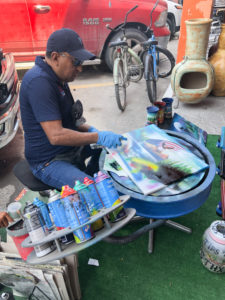 This is a spray paint artist we watched in Progreso, Mexico. He was quite good and I STILL can’t figure out how anyone paints anything worth hanging with spray paint. What talent.
This is a spray paint artist we watched in Progreso, Mexico. He was quite good and I STILL can’t figure out how anyone paints anything worth hanging with spray paint. What talent.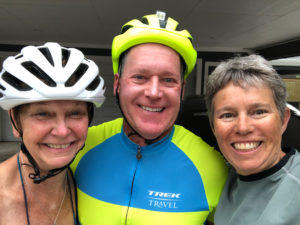
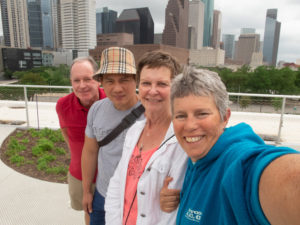
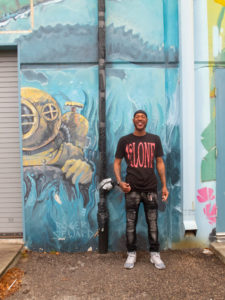
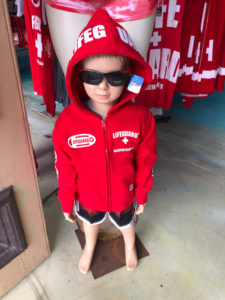 A creepy little guy selling clothing in Galveston.
A creepy little guy selling clothing in Galveston.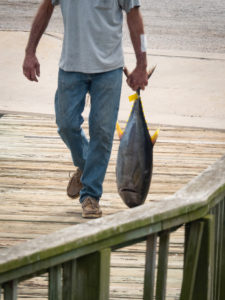 This guy had caught a yellowfin tuna and wanted someone at the fish market to filet it for him but they had already closed for the afternoon so he had to walk his poor tuna back to his boat, dragging its nose along the dock, to filet it himself.
This guy had caught a yellowfin tuna and wanted someone at the fish market to filet it for him but they had already closed for the afternoon so he had to walk his poor tuna back to his boat, dragging its nose along the dock, to filet it himself.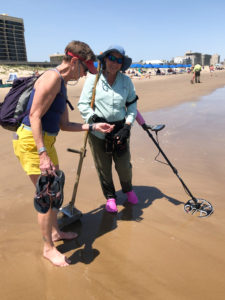 We fund several folks on the South Padre Island Beach searching for treasures.
We fund several folks on the South Padre Island Beach searching for treasures.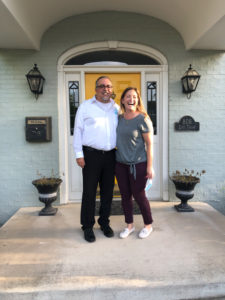 This is the beautiful couple now living in ellen’s childhood home in Harlingen, Tiffany, and Rudy. They were gracious hosts, let us wander into each room, and even sent us off with a Texas treat bag.
This is the beautiful couple now living in ellen’s childhood home in Harlingen, Tiffany, and Rudy. They were gracious hosts, let us wander into each room, and even sent us off with a Texas treat bag.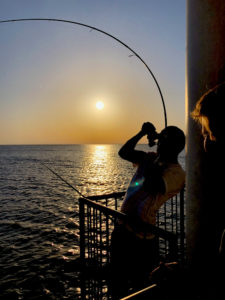 This guy was fishing off the end of the pier at Fountainebleau State Park on Lake Ponchatrain. He caught s small ray of some sort.
This guy was fishing off the end of the pier at Fountainebleau State Park on Lake Ponchatrain. He caught s small ray of some sort.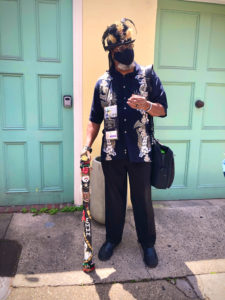
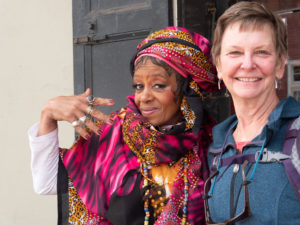
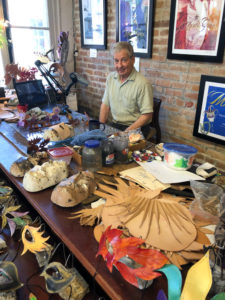 This is the artist who makes the mardi gras masks. They are exquisite.
This is the artist who makes the mardi gras masks. They are exquisite.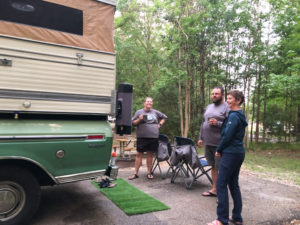 Back at camp, we were approached by Erin who invited us back to her pad to meet Andy. They own the only Four Wheel Camper in the south! Ok, probably not but it’s the only other one we saw once we left Arizona. It’s an early 1990s Granby on a ’73 Ford 100. They live in it full time and travel in between Amazon warehouse jobs. Quite the interesting couple.
Back at camp, we were approached by Erin who invited us back to her pad to meet Andy. They own the only Four Wheel Camper in the south! Ok, probably not but it’s the only other one we saw once we left Arizona. It’s an early 1990s Granby on a ’73 Ford 100. They live in it full time and travel in between Amazon warehouse jobs. Quite the interesting couple.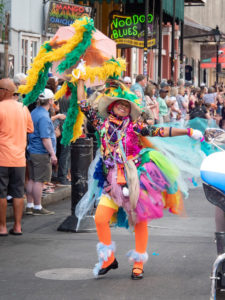 I first saw this colorful character coming from behind us, walking down a side street toward the parade. Once she was in front of all the bands she came alive and began dancing along with the music as she made her way down the avenue.
I first saw this colorful character coming from behind us, walking down a side street toward the parade. Once she was in front of all the bands she came alive and began dancing along with the music as she made her way down the avenue.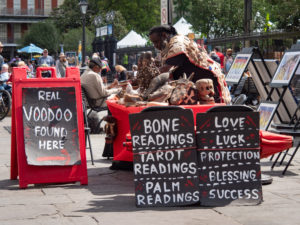 Only in New Orleans…
Only in New Orleans…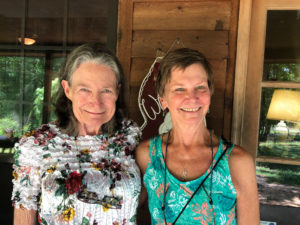 We stopped to visit ellen’s sister Ruth who happened to be staying with her son and daughter-in-law in Poplar, Mississippi.
We stopped to visit ellen’s sister Ruth who happened to be staying with her son and daughter-in-law in Poplar, Mississippi.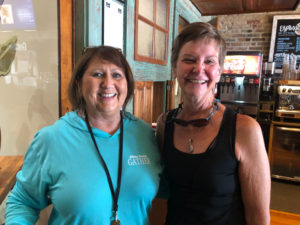 THIS was an interesting conversation. We stopped in this coffee shop in Houston, MS looking for help in finding the road and house Ellen and her family lived in 1969-70ish. Ellen mentioned the high school where she was a freshman and this lady lowered her voice and said, in a soft southern accent, that the old high school had burned down in 1973 under suspicious circumstances. When we asked what happened she lowered her voice, even more, looked around, and said that was the year they elected their first Black homecoming queen. Yikes!
THIS was an interesting conversation. We stopped in this coffee shop in Houston, MS looking for help in finding the road and house Ellen and her family lived in 1969-70ish. Ellen mentioned the high school where she was a freshman and this lady lowered her voice and said, in a soft southern accent, that the old high school had burned down in 1973 under suspicious circumstances. When we asked what happened she lowered her voice, even more, looked around, and said that was the year they elected their first Black homecoming queen. Yikes!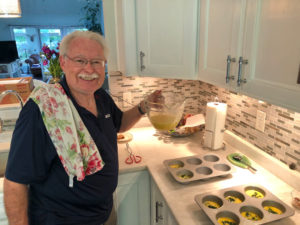
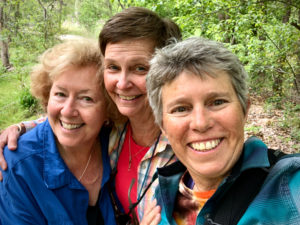
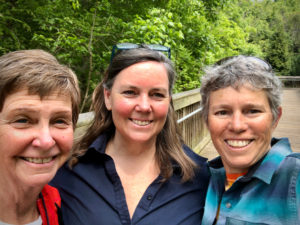
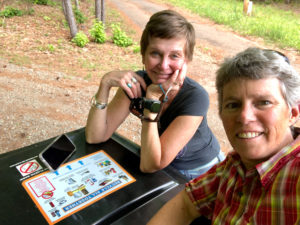
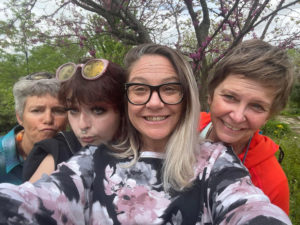 Evonne and Akacia showed us their favorite places.
Evonne and Akacia showed us their favorite places. Rob spends a lot of time on his craft as a tattoo artist.
Rob spends a lot of time on his craft as a tattoo artist.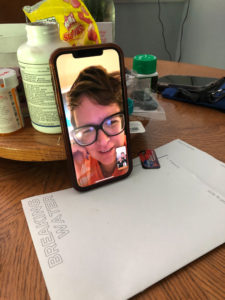 Chelsea joined us for Mother’s Day morning coffee.
Chelsea joined us for Mother’s Day morning coffee.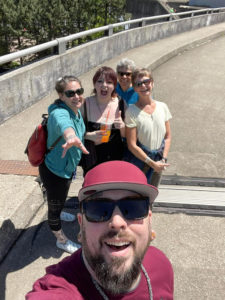 Rob got to join us on a sunny day downtown.
Rob got to join us on a sunny day downtown. We went to Evonne’s place of work on our way out of town at the end of the week. They all love her there.
We went to Evonne’s place of work on our way out of town at the end of the week. They all love her there.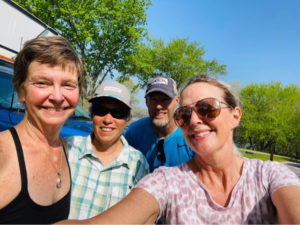 We met these two lovely folks at Sugar Bottom Campground outside of Iowa City. We hope to run into them again in our adventures.
We met these two lovely folks at Sugar Bottom Campground outside of Iowa City. We hope to run into them again in our adventures.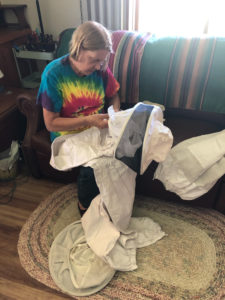 We spent two days at the family farm in Nebraska where we extracted honey from bee boxes with this amazing lady, Becky Puncochar, my half-brother’s Aunt. We also learned about and got to ride a folding bike which we have incorporated into our camping rig, and got to wander down by the Platt River with Jonathan who came to visit from Denver for the weekend. It was a busy two days.
We spent two days at the family farm in Nebraska where we extracted honey from bee boxes with this amazing lady, Becky Puncochar, my half-brother’s Aunt. We also learned about and got to ride a folding bike which we have incorporated into our camping rig, and got to wander down by the Platt River with Jonathan who came to visit from Denver for the weekend. It was a busy two days.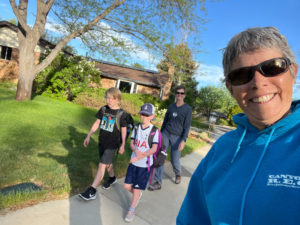 Our final stop was Denver where we got to walk the niece and nephew to school.
Our final stop was Denver where we got to walk the niece and nephew to school.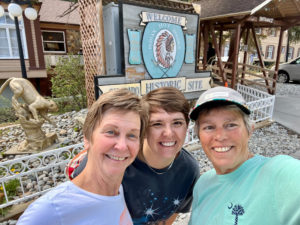 Hang out with Chelsea in Idaho Springs and hot tub.
Hang out with Chelsea in Idaho Springs and hot tub.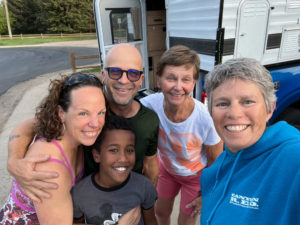 Have dinner with the Prow family. I taught with Laura at Killip in Flagstaff some years ago. Timothy is a master plumber and Nate hales from Ethiopia. We love this framily.
Have dinner with the Prow family. I taught with Laura at Killip in Flagstaff some years ago. Timothy is a master plumber and Nate hales from Ethiopia. We love this framily.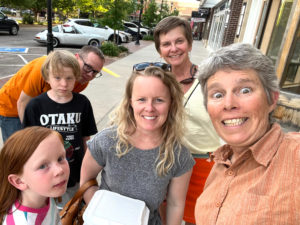 We had days mostly to ourselves as Chelsea took the week off but got sick and spent time sleeping, everyone else was either at work or school.
We had days mostly to ourselves as Chelsea took the week off but got sick and spent time sleeping, everyone else was either at work or school.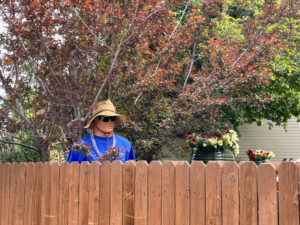 Except for this guy, he seemed to be the neighborhood watch guy. Creepy.
Except for this guy, he seemed to be the neighborhood watch guy. Creepy.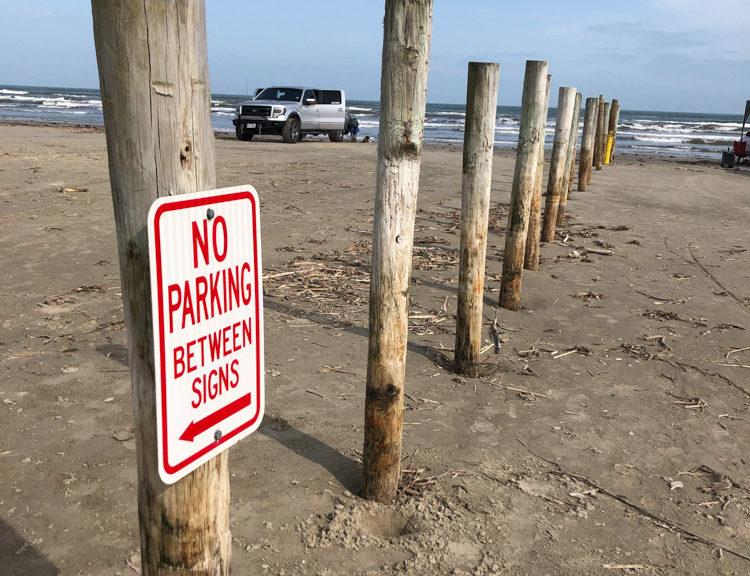
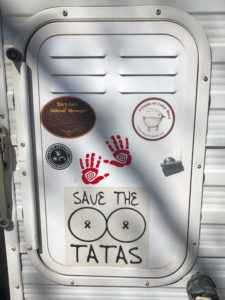
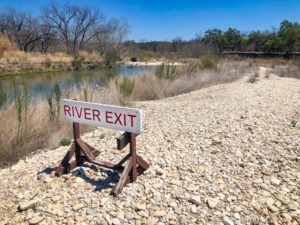 This denotes the location where day floaters can exit the South Llano River near our campground. This image will also show up under Nature. Nature is a HUGE category that I will discuss in September.
This denotes the location where day floaters can exit the South Llano River near our campground. This image will also show up under Nature. Nature is a HUGE category that I will discuss in September.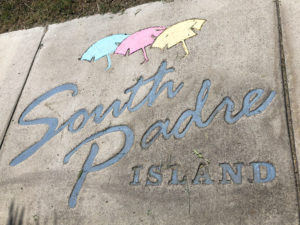 This would show up around town in South Padre Island.
This would show up around town in South Padre Island.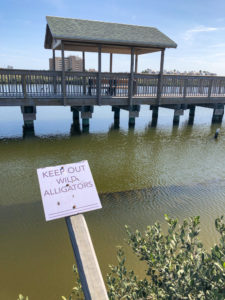 Also on South Padre Island, at the end of the island near the sand dunes was this sign. Ya just don’t see this in Flagstaff. This is another example of the second tag of Nature.
Also on South Padre Island, at the end of the island near the sand dunes was this sign. Ya just don’t see this in Flagstaff. This is another example of the second tag of Nature.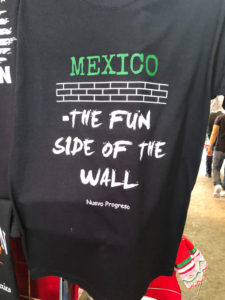 I have more T-shirts than I could ever need so when I see a clever saying on one I SHOOT it!
I have more T-shirts than I could ever need so when I see a clever saying on one I SHOOT it!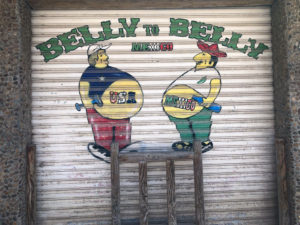 This shop door was also in Progresso and was also tagged under Art.
This shop door was also in Progresso and was also tagged under Art.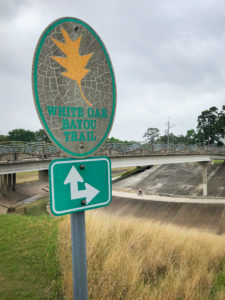 In Houston, I learned about bayous. There are miles and miles of mostly cement trails along the bayous of Houston which apparently are NOT rivers and not quite swamps. By definition, its a body of water typically found in a flat, low-lying area, and may refer to an extremely slow-moving stream or river (often with a poorly defined shoreline), a marshy lake or wetland, or a creek whose current reverses daily due to tides, and which contains brackish water highly conducive to fish life and plankton.
In Houston, I learned about bayous. There are miles and miles of mostly cement trails along the bayous of Houston which apparently are NOT rivers and not quite swamps. By definition, its a body of water typically found in a flat, low-lying area, and may refer to an extremely slow-moving stream or river (often with a poorly defined shoreline), a marshy lake or wetland, or a creek whose current reverses daily due to tides, and which contains brackish water highly conducive to fish life and plankton.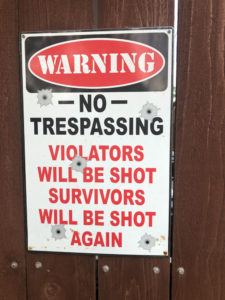 This sign would be more humorous if it wasn’t posted in Texas and in a country ripe with gun violence.
This sign would be more humorous if it wasn’t posted in Texas and in a country ripe with gun violence.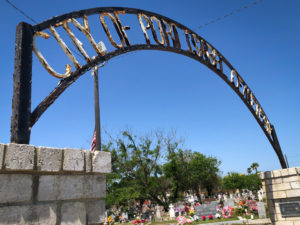 We love cemeteries. This is the sign above the one in Port Isabel.
We love cemeteries. This is the sign above the one in Port Isabel.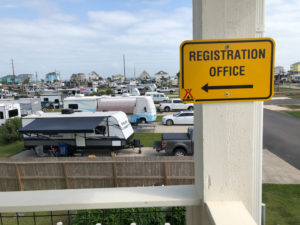 This is in the KOA Holiday Campground in Galveston Definitely not our jam.
This is in the KOA Holiday Campground in Galveston Definitely not our jam.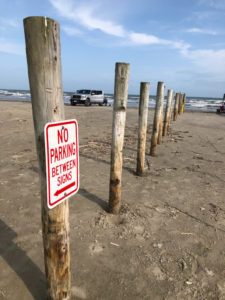 This beach was within walking distance of our KOA Galveston campground, which made it worth it. The beaches in Texas are low, flat and hard packed, perfect for driving and camping on.
This beach was within walking distance of our KOA Galveston campground, which made it worth it. The beaches in Texas are low, flat and hard packed, perfect for driving and camping on.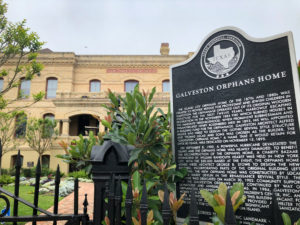 This is another image that is also tagged under Buildings. You probably can’t read it but the story of the Galveston Orphans Home was pretty interesting.
This is another image that is also tagged under Buildings. You probably can’t read it but the story of the Galveston Orphans Home was pretty interesting.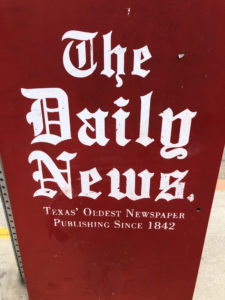 That’s one old newspaper!
That’s one old newspaper!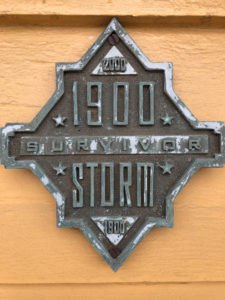 These plaques were posted on many buildings we came across in Galveston. The 1900
These plaques were posted on many buildings we came across in Galveston. The 1900 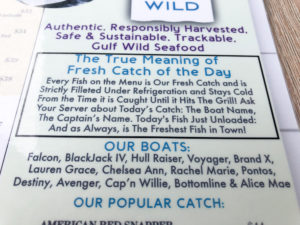 This is info I shot off the menu at Katie’s Seafood Restaurant in Galveston.
This is info I shot off the menu at Katie’s Seafood Restaurant in Galveston.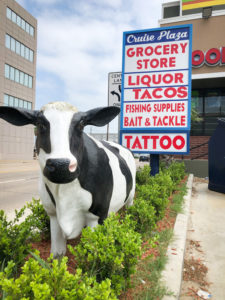 Talk about random. Grocery Store was not quite accurate. It was more of a convenience/sporting goods store.
Talk about random. Grocery Store was not quite accurate. It was more of a convenience/sporting goods store.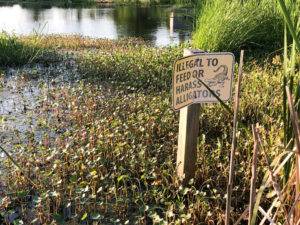 More alligator signs. This one was in the pond near Lake Ponchatrain at our camp in Louisiana. Yet another reason to sleep in a camper!
More alligator signs. This one was in the pond near Lake Ponchatrain at our camp in Louisiana. Yet another reason to sleep in a camper!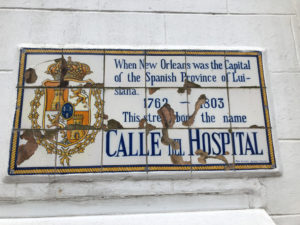 These tiled signs were all over New Orleans and I found them interesting.
These tiled signs were all over New Orleans and I found them interesting.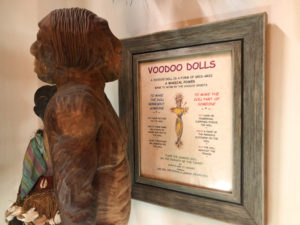 Lots of new information in the Voodoo Museum.
Lots of new information in the Voodoo Museum.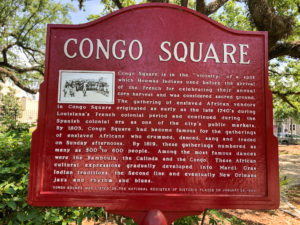 Another fascinating sign with historical information that we came across on our Voodoo Museum Tour. In colonial times, Congo Square was an open-air market where blacks—both enslaved and free—met on “free Sundays” to take part in sacred African rituals, talk, trade, and perform traditional songs and dance, helping lay the foundations for what would later become jazz.
Another fascinating sign with historical information that we came across on our Voodoo Museum Tour. In colonial times, Congo Square was an open-air market where blacks—both enslaved and free—met on “free Sundays” to take part in sacred African rituals, talk, trade, and perform traditional songs and dance, helping lay the foundations for what would later become jazz.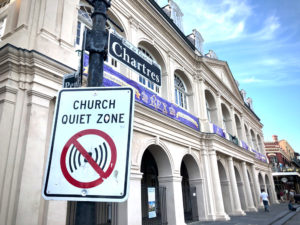 I found this sign to be a bit ironic as this church faces the square where a lot of activity happens during festivals.
I found this sign to be a bit ironic as this church faces the square where a lot of activity happens during festivals.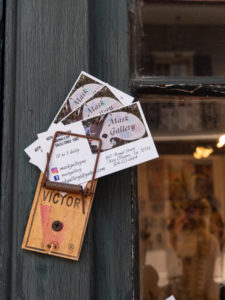 I thought this was a great way to offer business cards on the outside of your door.
I thought this was a great way to offer business cards on the outside of your door.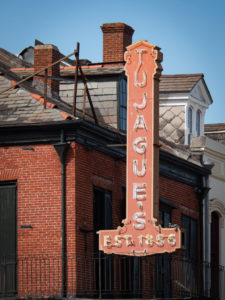
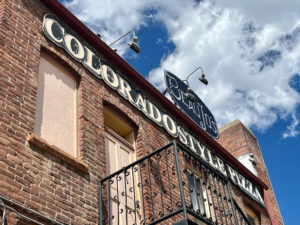
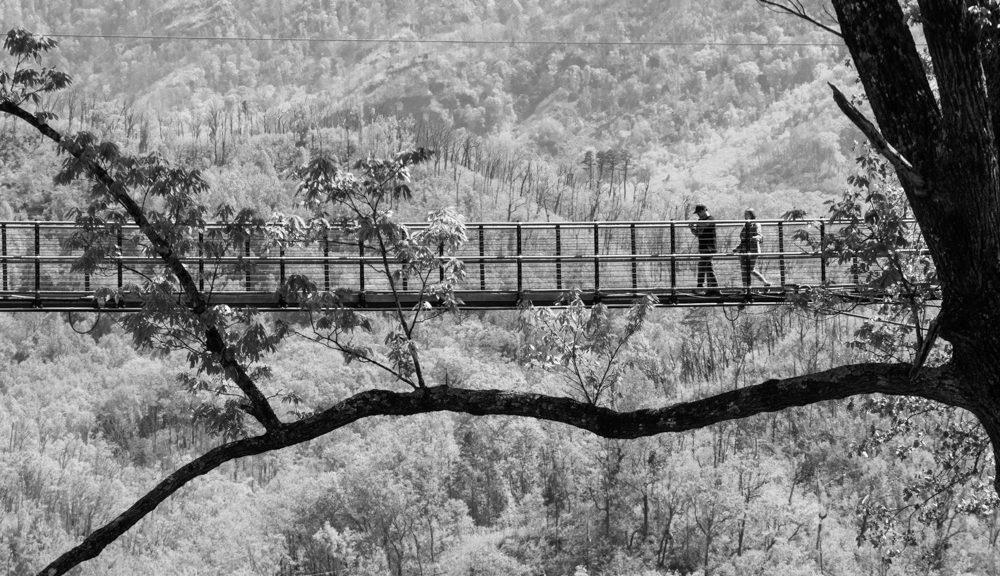
 Portal was a busy two days and three nights. Our excursions included visiting the little town, following Michelle around on her daily house-sitting tour, a quick driving tour of the area including Rodeo, NM, and some campgrounds in the Chiricahua national monument, and a couple of short hikes, one to this watering hole and another to a beautiful vista in the monument.
Portal was a busy two days and three nights. Our excursions included visiting the little town, following Michelle around on her daily house-sitting tour, a quick driving tour of the area including Rodeo, NM, and some campgrounds in the Chiricahua national monument, and a couple of short hikes, one to this watering hole and another to a beautiful vista in the monument. These little babies, maybe baby Jesus? were found in a store in Mexico. They were initially tagged as People, though that’s a stretch, and Art, another stretch. This is an example of an image not fitting in any of the initial main theme tags very well but they were seen on our excursion into Mexico.
These little babies, maybe baby Jesus? were found in a store in Mexico. They were initially tagged as People, though that’s a stretch, and Art, another stretch. This is an example of an image not fitting in any of the initial main theme tags very well but they were seen on our excursion into Mexico. Heading into Mexico we crossed the famed Rio Grande River. Here is a border patrol truck driving the river frontage road. I have no idea how far this road goes or how many desperate people they encounter each day. The river is smaller than I had imagined.
Heading into Mexico we crossed the famed Rio Grande River. Here is a border patrol truck driving the river frontage road. I have no idea how far this road goes or how many desperate people they encounter each day. The river is smaller than I had imagined. In the Harlingen area, we had several errands we ran. Here’s ellen at the post office mailing a package to her sister in Bellingham, WA. We also got the truck windows tinted, tried to get help fixing the outdoor shower leak, discovered some items we needed and did a Walmart run, went grocery shopping, saw a movie, hit a mall, and the like.
In the Harlingen area, we had several errands we ran. Here’s ellen at the post office mailing a package to her sister in Bellingham, WA. We also got the truck windows tinted, tried to get help fixing the outdoor shower leak, discovered some items we needed and did a Walmart run, went grocery shopping, saw a movie, hit a mall, and the like. The sand dunes on SPI are tagged People, Nature, Excursions.
The sand dunes on SPI are tagged People, Nature, Excursions.
 This image is tagged People, Buildings, Excursions as it is the stairway up to the top of the lighthouse.
This image is tagged People, Buildings, Excursions as it is the stairway up to the top of the lighthouse. This is Ellen in her childhood home in Harlingen. Finding this home was the reason for our deep south Texas detour. It was such a wonderful experience. The owners were lovely and let us in to visit. Ellen told lots of stories of her adventures with her siblings in this house.
This is Ellen in her childhood home in Harlingen. Finding this home was the reason for our deep south Texas detour. It was such a wonderful experience. The owners were lovely and let us in to visit. Ellen told lots of stories of her adventures with her siblings in this house.


 This is in downtown Houston where you can walk down to the bayou. It is said you can kayak in these waters although we did not see anyone in them.
This is in downtown Houston where you can walk down to the bayou. It is said you can kayak in these waters although we did not see anyone in them.






 These electrical lines remind me of some I photographed in Kathmandu. During the 19th century, Galveston became a major U.S. commercial center and one of the largest ports in the United States. It was, for a time, Texas’ largest city, known as the “Queen City of the Gulf”. It was devastated by the unexpected Galveston Hurricane of 1900, whose effects included massive flooding and a storm surge that nearly wiped out the town. The natural disaster on the exposed barrier island is still ranked today as the deadliest in United States history, with an estimated death toll of between 6,000 to 12,000 people. The city subsequently reemerged during the Prohibition era of 1919–1933 as a leading tourist hub and a center of illegal gambling, nicknamed the Free State of Galveston until this era ended in the 1950s with subsequent other economic and social development.
These electrical lines remind me of some I photographed in Kathmandu. During the 19th century, Galveston became a major U.S. commercial center and one of the largest ports in the United States. It was, for a time, Texas’ largest city, known as the “Queen City of the Gulf”. It was devastated by the unexpected Galveston Hurricane of 1900, whose effects included massive flooding and a storm surge that nearly wiped out the town. The natural disaster on the exposed barrier island is still ranked today as the deadliest in United States history, with an estimated death toll of between 6,000 to 12,000 people. The city subsequently reemerged during the Prohibition era of 1919–1933 as a leading tourist hub and a center of illegal gambling, nicknamed the Free State of Galveston until this era ended in the 1950s with subsequent other economic and social development.

 These two critters were taking in the festival parade. They could use a good brushing, don’t ya think?
These two critters were taking in the festival parade. They could use a good brushing, don’t ya think? This critter was at our Cajun Restaurant where we ate after the morning at the plantation.
This critter was at our Cajun Restaurant where we ate after the morning at the plantation. These big round containers had something to do with raising and processing sugar. The slave quarters are in the background.
These big round containers had something to do with raising and processing sugar. The slave quarters are in the background.

 Again with the Voodoo Museum. There was so much fascinating information in there.
Again with the Voodoo Museum. There was so much fascinating information in there.












 Five states later we are in Cincinnati for a week! Following a day in the ER with Akacia she rallied and we thrifted.
Five states later we are in Cincinnati for a week! Following a day in the ER with Akacia she rallied and we thrifted. We tried to go to the shark girl museum but had lunch instead.
We tried to go to the shark girl museum but had lunch instead.

 We also walked around Eden Park and saw great views of the city.
We also walked around Eden Park and saw great views of the city. We found this beautiful pond at Spring Grove Cemetery. Spring Grove Cemetery and Arboretum is a nonprofit rural cemetery and arboretum in Cincinnati, Ohio. It is the third largest cemetery in the United States and is recognized as a US National Historic Landmark.
We found this beautiful pond at Spring Grove Cemetery. Spring Grove Cemetery and Arboretum is a nonprofit rural cemetery and arboretum in Cincinnati, Ohio. It is the third largest cemetery in the United States and is recognized as a US National Historic Landmark.





 That afternoon went to a local cemetery where my birthfather is buried as well as several members of Jonathan’s family. They have been on this farm for over 100 years. The next day we donned beekeeping suits and helped with some bee boxes. Later that day we helped extract honey and bottle it. SO cool!
That afternoon went to a local cemetery where my birthfather is buried as well as several members of Jonathan’s family. They have been on this farm for over 100 years. The next day we donned beekeeping suits and helped with some bee boxes. Later that day we helped extract honey and bottle it. SO cool!


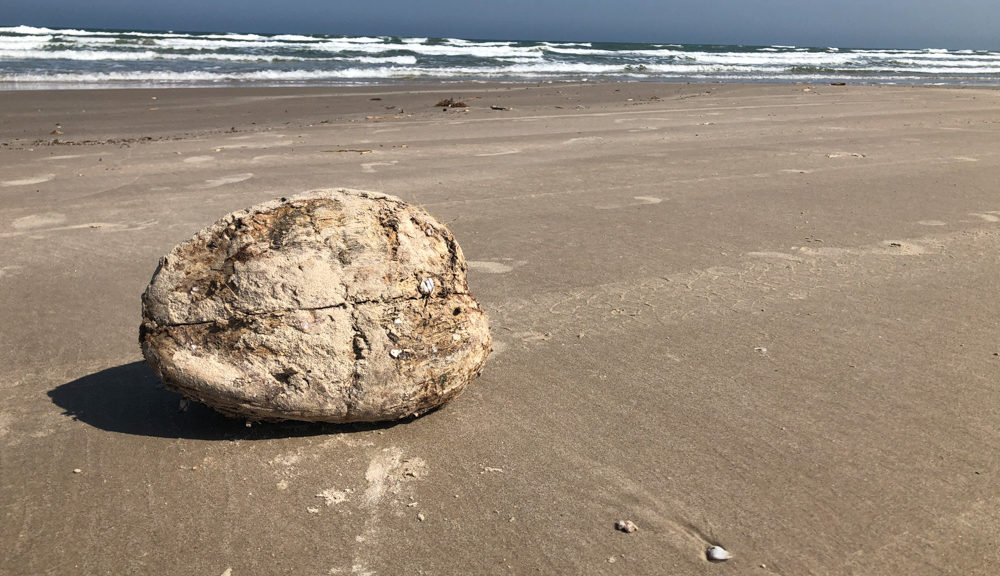
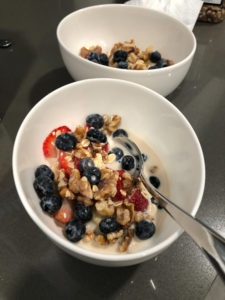
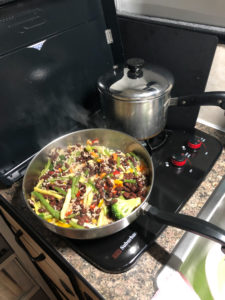 Here’s our little stove at work warming up the beans and vegetables while cooking the rice for ten minutes. It became our favorite camp dinner. We tried to substitute quinoa but didn’t love it.
Here’s our little stove at work warming up the beans and vegetables while cooking the rice for ten minutes. It became our favorite camp dinner. We tried to substitute quinoa but didn’t love it.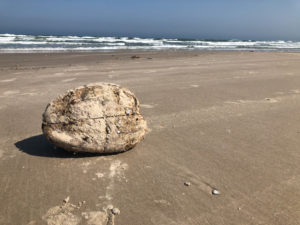
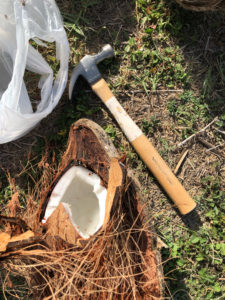
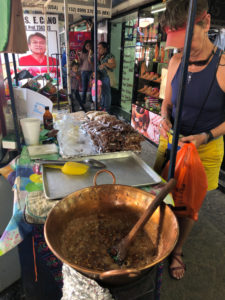 We ate out, a LOT. Here we picked up some nuts from a street vendor in Progresso, Sonora.
We ate out, a LOT. Here we picked up some nuts from a street vendor in Progresso, Sonora.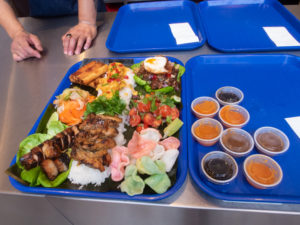 We had our first Philipino food with Dave and Bong in Houston, Texas.
We had our first Philipino food with Dave and Bong in Houston, Texas.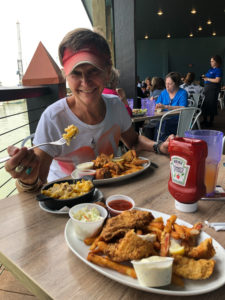 We had fish n chips and DELICIOUS mac and cheese at Katie’s Seafood in Galveston. That wasn’t necessarily new but it had been a LONG time since we’d had it.
We had fish n chips and DELICIOUS mac and cheese at Katie’s Seafood in Galveston. That wasn’t necessarily new but it had been a LONG time since we’d had it.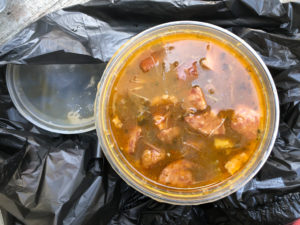
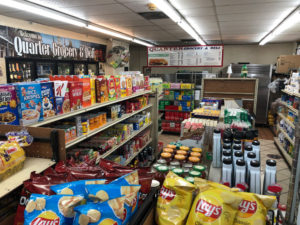
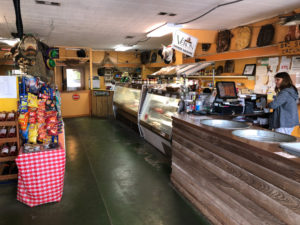
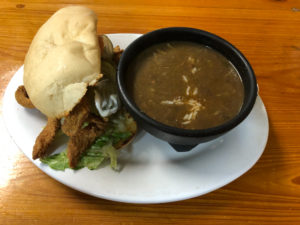
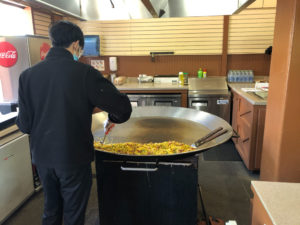
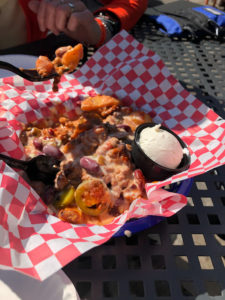
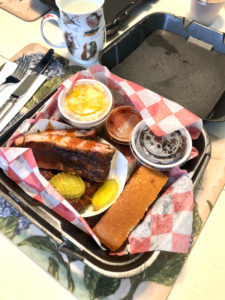
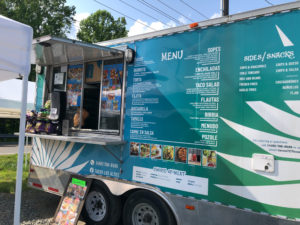 In Hillsborough, we found a food truck and got some tacos.
In Hillsborough, we found a food truck and got some tacos.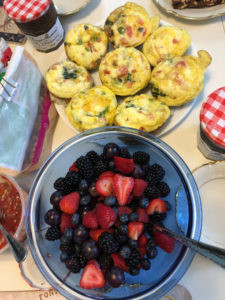 Our friends and old neighbors, Trish Paul in Weaverville, put this delicious spread out for us one morning,
Our friends and old neighbors, Trish Paul in Weaverville, put this delicious spread out for us one morning,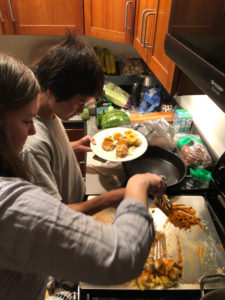 Cousin Colby impressed us with his chef skills in making these smashed potatoes to go with our roasted chicken, Ceasar salad, and garlic-me bread.
Cousin Colby impressed us with his chef skills in making these smashed potatoes to go with our roasted chicken, Ceasar salad, and garlic-me bread.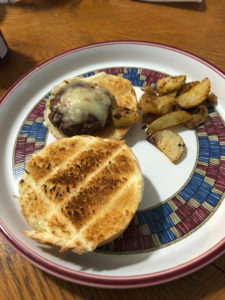 Granddaughter Akacia fed us one evening from a Hello Fresh box. It was a nice combo of burger and fries.
Granddaughter Akacia fed us one evening from a Hello Fresh box. It was a nice combo of burger and fries.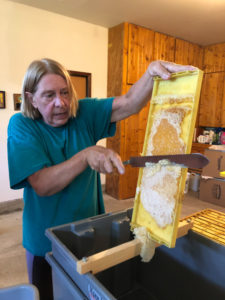
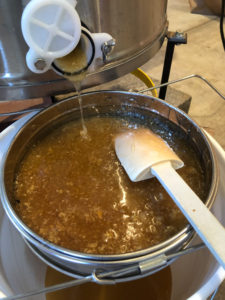
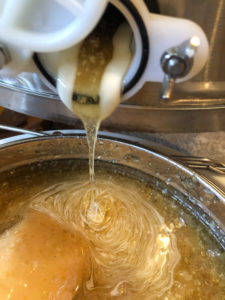
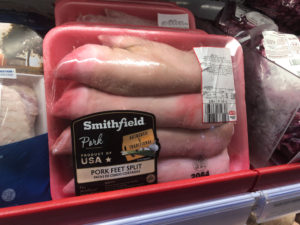

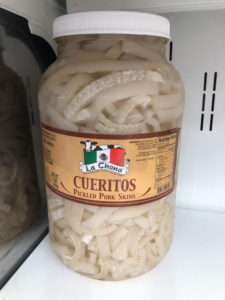
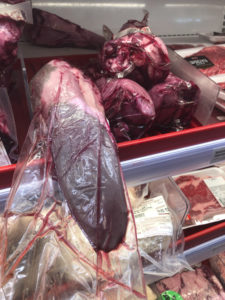
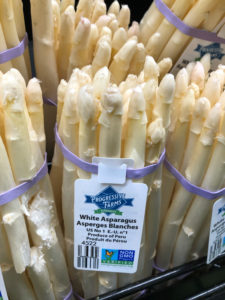 I hadn’t seen white asparagus before.
I hadn’t seen white asparagus before.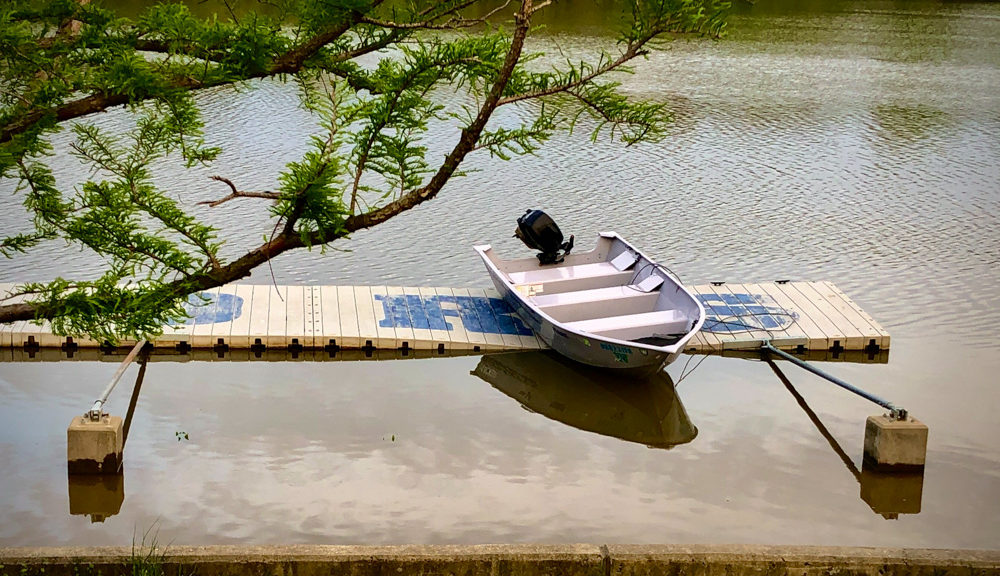
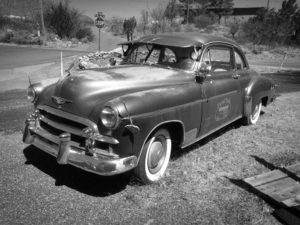 iPhone 8
iPhone 8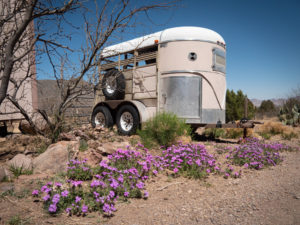 Lumix GX8, 14-150mm
Lumix GX8, 14-150mm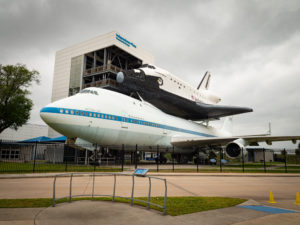 Lumix GX8, 7-14mm
Lumix GX8, 7-14mm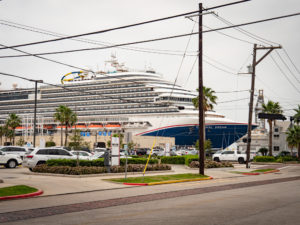 Lumix GX8, 14-150mm
Lumix GX8, 14-150mm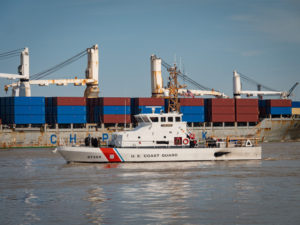 Lumix GX8, 14-150mm
Lumix GX8, 14-150mm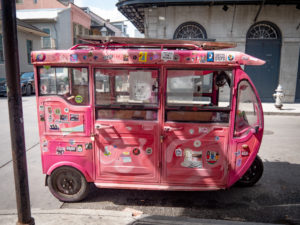 Lumix GX8, 14-150mm
Lumix GX8, 14-150mm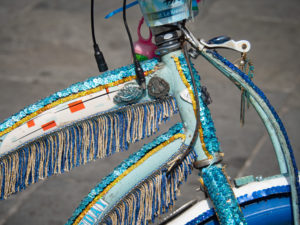 Lumix GX8, 14-150mm
Lumix GX8, 14-150mm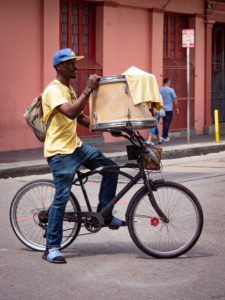 iPhone 8
iPhone 8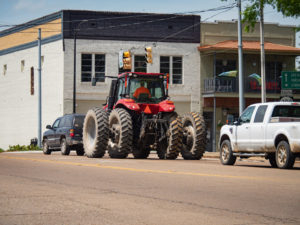 Lumix GX8, 14-150mm
Lumix GX8, 14-150mm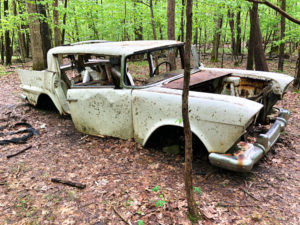 iPhone 8
iPhone 8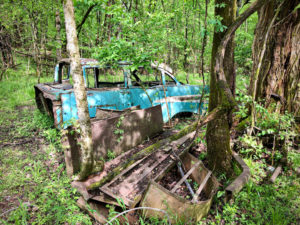 iPhone 8
iPhone 8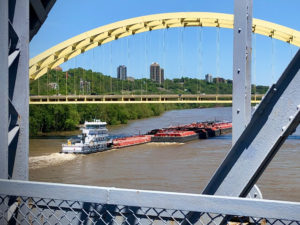 iPhone 8
iPhone 8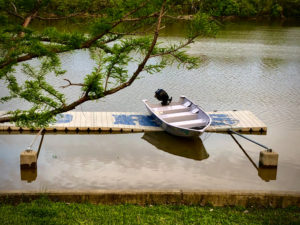 iPhone 8
iPhone 8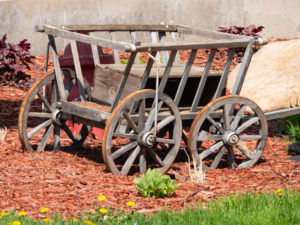 Lumix GX8, 14-150mm
Lumix GX8, 14-150mm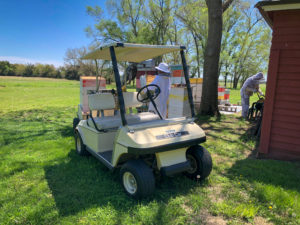 iPhone 8
iPhone 8